
Goodwill Northern Michigan’s Dan Buron has a big resume and an even more ambitious list of goals for the region
A good professional fundraiser is harder than ever to find. For those still looking, experts say a lack of experience is no concern









Goodwill Northern Michigan’s Dan Buron has a big resume and an even more ambitious list of goals for the region
A good professional fundraiser is harder than ever to find. For those still looking, experts say a lack of experience is no concern







• We uphold a Fiduciary Standard and work with clients on a fee-only basis.
• We do not receive commissions, kick-backs, or soft dollars from product sales, eliminating inherent conflicts of interest.
• Our team of professionals holds designations and degrees such as CFP®, CFA, CPA, MBA, and PhD.
• Charles received his MBA from the Kellogg School of Management - Northwestern University, his MA in Economics from WMU, and Executive Education from Harvard Business School and Columbia University.
Charles Zhang, CFP®, MBA, MSFS, ChFC
• Ranked #1 on Barron’s list of America’s TOP Independent Advisors and is the highest ranked NAPFA-Registered Fee-Only Advisor on the list.*
• Ranked #4 in the nation on Forbes’ list of TOP Wealth Advisors and is the ONLY Independent Advisor in the top 10.**
Minimum investment: $1,000,000 in Michigan/$2,000,000 outside of Michigan. Assets under custody of LPL Financial, TD Ameritrade, and Charles Schwab.


TentCraft , a U.S. manufacturer of custom tents, structures, and event solutions in Traverse City, has acquired World Class Displays, an Iowa-based, full-service custom exhibit company with more than 40 years of expertise in creating custom trade show booths. The acquisition bolsters TentCraft’s capabilities in the indoor event space. World Class Displays will retain its name and operate within the TentCraft family of companies, alongside PrintCraft On Demand and PrintCraftSend. Its existing facilities in Marion, Iowa, will continue production, with TentCraft’s headquarters set to handle overflow production during peak trade show season.
Life of Riley Meadows (formerly Ritters Assisted Care Facility) in Traverse City has expanded with the acquisition of two additional facilities: Life of Riley Maples (formerly Woodside Assisted Living) and Life of Riley Oaks (formerly Southridge Assisted Living). Also, Jessi Rokos has been hired as executive administrator. Rokos spent more than two decades at the Grand Traverse Pavilions. All three facilities are owned by Cole Riley.
20Fathoms recently announced new no cost, one-on-one startup coaching opportunities are now available on a recurring basis for entrepreneurs in Traverse City and Benzie County. Coaching is available on a drop-in basis (no appointment needed) at 20Fathoms in Traverse City every Thursday, 1pm4pm, and at Grow Benzie in Benzonia on the third Thursday of each month, 12:30pm-2:30pm. In addition to coaching, 20Fathoms is also providing startup boot camps in these communities. Dates for the next boot camp cohorts will be announced in early 2025. More info at 20fathoms.org/coaching.

Aspire North REALTORS , under the leadership of President Jessica Brutzman, has chosen Alan Jeffries to succeed Kimberly Pontius as its CEO in 2025. Pontius, who led the organization since 2007, announced in May that he would not seek renewal of his contract. Jeffries is a seasoned CEO/ association executive, serving in the role at the Southwestern Michigan Association of Realtors and Real Estate Systems since May 2017. He has also been a licensed real estate broker for 31 years and previously owned his own brokerage in Kalamazoo.
Craig W. Elhart, PC in Traverse City is now Elhart & Kreinbrink, PLLC (eklawtc.com), with attorney Lauren R.P. Kreinbrink joining Elhart and the firm as partner. Kreinbrink is the former prosecuting attorney for Mason County. Elhart has practiced law in Traverse City for 50 years.





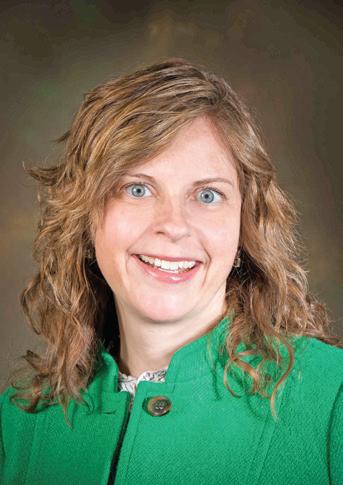
Kelly Dunham, executive director of the Bay Area Transportation Authority (BATA) since 2016, is leaving the organization this month. She first joined BATA in 2009 as human resources manager and also served as the transit agency’s director of human resources and operations before being named executive director. Dunham helped revolutionize BATA by reinventing its brand, finding and hiring new personnel and transforming its service delivery model from a traditional dial-a-ride service to a hybrid fixed route and on-demand transportation system. She and her team also planned the building of BATA’s new headquarters by securing more than $23 million in federal and state grant funds. Dunham has joined 4Front Credit Union as chief culture officer.
Fractional Insights , a Traverse Citybased research and advisory firm revolutionizing the future of work, won the $5,000 first place prize at last month’s TCNewTech pitch competition hosted by 20Fathoms . The firm “bridges the











CLIENT: Gauthier Family Property (former Big Top property)
PROJECT: Multi-family Development Sale
SERVICES: Rezoning, Listing & Selling Broker

Colleen Smith Kevin endres principal, three west commercial Ernie Gauthier





Talk about challenging. Our 19-acre family homestead had 10 heirs. It encompassed our childhood home, our businesses, agriculture, you name it.
Kevin navigated the complexities of this sale brilliantly. From complex zoning issues to family dynamics, Kevin was able to finesse the best deal while managing to ensure our family legacy – the buyer plans workforce housing (160 units), desperately needed in our community.
Our parents would’ve been delighted. We sure are!
gap between cutting-edge AI technology and human-centric workplace design,” according to a news release announcing the winner. Fractional Insights was founded by Shonna Waters and Erin Eatough. The $2,000 second place award went to Blooma, an all-in-one garden app that unites Gen-Z and Millennial gardeners through social connections and offers easy-to-use resources. Blooma, founded by Erin Blohm, is based in Leelanau County.
United Way of Northwest Michigan has announced new members on its board of directors. They include Laura Matchett, director of extended education and training at Northwestern Michigan College (Grand Traverse County), and Abigail Ellsworth, a naturopathic doctor and founder of Freshwater Wellness (Benzie County). In addition, Deon Vaughan, current board chair from Leelanau County, was re-elected to a second term.

TC Adventure Bike , a new business offering guided motorcycle adventures on the area’s roads and trails, is now open. “Our goal is to share the experience of northern Michigan, and to encourage people to get into the sport,” said Dan Gray, who owns the business along with Brian Allen and Luke Reneaud. “Riders also can try out various models if considering buying a bike.” Riders must be at least 21 years of age and have a valid motorcycle endorsement, with the business offering tours on KTM 390, 690 and 890 adventure models. Learn more at tcadventurebike.com.
The annual Northern Michigan Policy Conference will be held January 31 at the Grand Traverse Resort and Spa. Now in its seventh year, the conference is designed to leverage diverse strategies to enhance the region’s standing as a world class place for business, residents, visitors, and students. Speakers will address chronic issues surrounding business development, talent, housing,
and childcare. More info and tickets at traverseconnect.com.
Venture North in Traverse City recently received a $50,000 grant from the DTE Energy Foundation to support small business growth in northern Michigan. The grant will enable Venture North, a U.S. Treasury-certified Community Development Financial Institution, to provide low-cost loans and no-cost consulting services. The focus will be on aiding small businesses, particularly in underserved areas of northwest Michigan.

Harmony Estate Wineries of Leelanau has acquired Dune Bird Winery , a Northport establishment founded by Nicole and Bo White. The winery joins the Harmony Estate Wineries of Leelanau family of wineries, alongside Bel Lago Vineyard & Winery and French Valley . “We are so proud of our new association with Dune Bird,” said John Heekin, owner and CEO of Harmony Estate Wineries of Leelanau.
“The culture that Nicole, Bo, and the Dune Bird team have created is awe-inspiring. We promise to continue what the Whites and their team have started and preserve the Dune Bird legacy for years to come.” Dune Bird launched in 2021 after the Whites transformed a former ranch into a winery. As part of the transition, Sarah Peschel will take over operations of the winery.
Traverse City Light and Power (TCLP) has earned a Smart Energy Provider (SEP) designation from the American Public Power Association for demonstrating a commitment to and proficiency in energy efficiency, distributed generation, and environmental initiatives that support the goal of providing safe, reliable, low-cost, and sustainable electric service. Of Michigan’s roughly 42 municipal utilities, TCLP is one of eight to carry this designation.



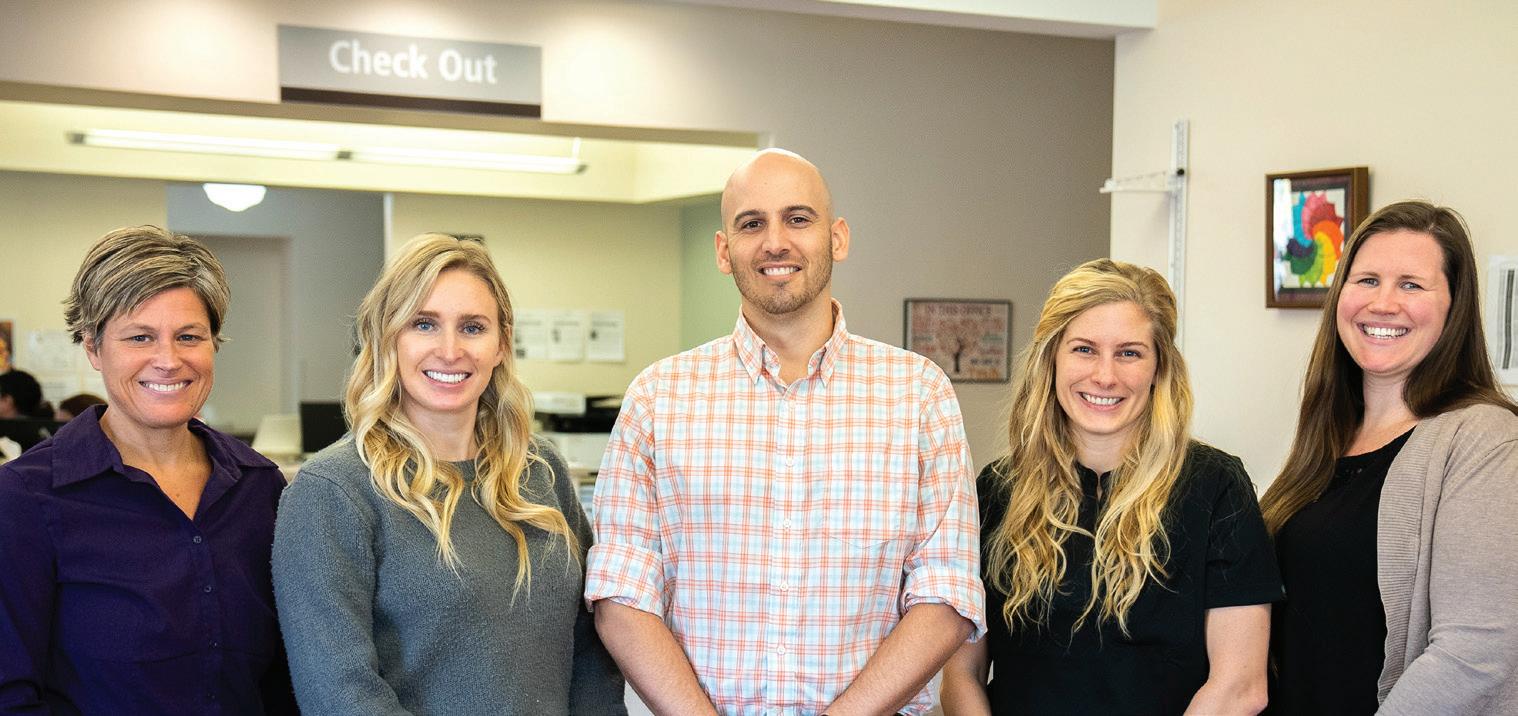







What is worse than bad government policy? Answer: confusing bad government policy.
This summer, the Michigan Supreme Court made headlines by ruling that the Michigan legislature had violated the state constitution in its “adopt and amend” approach to two ballot measures related to minimum wage and paid leave.
The court’s ruling has sparked both confusion and concern as businesses attempt to understand the implications and prepare for possible changes.
These ballot measures were initiated by an out-of-state special interest group and intended to increase the minimum wage, eliminate the tip-credit calculation for servers, and require that employers provide paid sick leave. While this may not sound alarming, the actual language to implement these programs is fraught with unworkable provisions, confusing rules and contradictory regulations.
To avoid the ballot process, the Michigan legislature adopted both initiatives into law in September 2018. Following the election, lawmakers moved to amend both laws. This “adopt and amend” approach allowed legislators to modify and scale back the original proposals to a more workable version that preserved the tipped wage credit and exempted smaller businesses with fewer than 50 employees from the sick leave requirements.
This legislative approach sparked considerable debate and legal action, leading to a complex battle over the constitutionality of the “adopt and amend” method. This ultimately resulted in the landmark July 2024 ruling from the Michigan Supreme Court.
Unless further legislative action is taken, the tipped minimum wage will be eliminated, and an unworkable set of paid sick leave provisions will be instated, applying to all businesses with one or more employees and nonprofit employers, including schools, hospitals, and local governments.
Traverse Connect and the Northern Michigan Chamber Alliance have closely followed these issues for more than six years, given their impact on our local economy. While we support fair labor practices, these laws as currently written will have significant negative implications for all businesses in our region, and they pose dire risks to our small businesses and the hospitality industry.
Unfortunately, many in Lansing are more focused on political games, and legislators have yet to address this issue. This is not a partisan issue or political game. It is a very serious across-the-board employer and employee problem that legislators need to fix.
Members of the Northern Michigan Chamber Alliance have been proactive in advocating for balanced solutions that ad-
EDITORIAL
PUBLISHER
Luke W. Haase
lhaase@tcbusinessnews.com
CONTRIBUTING EDITOR
Gayle Neu gneu@tcbusinessnews.com
HEAD WRITER
Craig Manning
STAFF WRITER
Art Bukowski
CREATIVE DIRECTOR
Kyra Cross Poehlman
dress the need to attract and retain talent without overburdening businesses. We have called on legislators to enact several amendments that will provide a more sustainable path forward for both workers and employers.
Paid sick leave provisions, as currently written, are vague and difficult to implement, leading to challenges for employers and employees. Michigan lawmakers need to ensure that the law protects employees while being practical for businesses to follow.
It is important the legislation recognizes that many employers already provide the required 72 hours or more of paid time off (PTO) and should be exempt from the new rules. This approach could be more flexible and manageable for businesses while also ensuring that employees receive time off.
Employers with fewer than 50 employees and seasonal businesses, such as those in tourism-driven regions of northern Michigan, should be exempted from paid sick leave requirements. This is in keeping with federal guidelines under the Family and Medical Leave Act and the Affordable Care Act. Such exemptions recognize the resource limitations of small and seasonal businesses and prevent them from facing disproportionate compliance challenges.
The minimum wage increases in the legislation are largely irrelevant, given our region’s relatively high entry-level wages,
but maintaining the tip credit is particularly important for our service industry. Surveys indicate that more than 80% of servers prefer to keep this system. By preserving the tip credit, legislators can safeguard jobs and prevent unintended consequences for workers and employers alike.
Given the economic pressures facing northern Michigan businesses, we are urging lawmakers to enact these amendments before the end of 2024. Immediate action will provide businesses with much-needed clarity and stability, allowing them to prepare for and comply with any new requirements while maintaining jobs.
The Michigan Supreme Court’s July 2024 decision underscores the need for a balanced approach to labor reform in Michigan. The court’s ruling creates new challenges for businesses, particularly small and seasonal employers. We have outlined common-sense reforms that protect workers while recognizing the unique needs of employers.
As the state moves forward, it will be essential to find a middle ground that respects constitutional processes, supports workers and promotes business growth in Michigan. If you have not already engaged your legislators on this issue, please take action now and get others involved.
Warren Call is CEO and president of Traverse Connect.
CONTRIBUTING
Ross Boissoneau
Kierstin Gunsberg
Rick Haglund
COPY EDITOR
Becky Kalajian
WEB
Byte Productions
MAILING/FULFILLMENT
Village Press
DISTRIBUTION
Gerald Morris
SERVING:
Grand Traverse, Kalkaska, Leelanau and Benzie counties
Caroline Bloemer
cbloemer@tcbusinessnews.com
Lisa Gillespie
lisa@northernexpress.com
Abby Walton Porter
aporter@northernexpress.com
Kaitlyn Nance knance@northernexpress.com
Todd Norris
tnorris@tcbusinessnews.com
Michele Young myoung@tcbusinessnews.com



Editor’s note: This letter is in response to the November article “Out of Network: Why dentists are ditching Delta Dental, and dropping other carriers, too.”
I am a dentist in the Traverse City area and am seeing a lot of new patients in my practice because their providers have stopped participating with dental benefits plans. These patients are scrambling to find someone who does. They’re justifiably feeling angry, abandoned and inconvenienced by having to wait to get into a new practice.
Access to affordable oral healthcare is essential for the overall health of a community. Dental benefits do more to get people to the dentist, especially for preventative care, than anything else, according to the American Dental Association. That’s why I continue to work collaboratively with dental benefits companies, and so do many of my colleagues in the Traverse City area. I am particularly proud to partner with Delta Dental, whose mission to improve oral health aligns with mine. Delta Dental has always been and is still today by far the easiest dental benefits company to work with.
The dentists who believe they can fix their finances by walking away from dental benefits partnerships are building a different kind of practice than I and many of my colleagues; they’re faulting the dental benefits companies for their woes.
The root of the problem is the high cost of doing business in a post-Covid world. Inflation has driven up our
overhead and expenses by nearly 40%. A stubborn national hygienist shortage has crippled our ability to consistently and affordably staff our offices. That shortage is even worse in a resort community like Traverse City where the cost of living, particularly the cost of housing, is out of reach for working- and middle-class families.
Over the past couple of years, Delta Dental of Michigan, Ohio, and Indiana has paid us more – $184 million more in reimbursements across its network. The company and the Delta Dental Foundation (DDF) are also offering scholarships starting in 2025 to attract more hygienists and a student loan repayment plan to new dentists who work in communities with shortages, like northern Michigan. No other dental benefits company that I am aware of does anything like this.
And it’s not like Delta Dental is immune to inflation. As their costs go up, surely they must pass some increases on to their customers. When employers cut or reduce dental benefits, or an individual decides they can no longer afford coverage, that means fewer people will go to the dentist. That isn’t a solution.
My practice and others in the region remain steadfast in our commitment to improving oral health in our community. Our doors are open to you. We just ask that new patients bring a little patience. We will take care of your emergencies and work you into our hygiene and cleaning schedules.
- Dennis T. Spillane, DDS, Bellaire









Mengebier, President
By Art Bukowski
CEO
The first thing Dave Mengebier will tell you about his desk is that he doesn’t like to be at it all that much. Mengebier is president and CEO of the Grand Traverse Regional Community Foundation, and he’d much rather be out interfacing with donors or community partners. But there are times when we’re all stuck behind the desk, and we’re grateful to Dave for showing us around his space at the foundation’s offices in the beautiful Village at Grand Traverse Commons. If you have an idea for a future From the Desk of Feature, please email Art Bukowski at abukowski@tcbusinessnews.com


1. This level is from Peace Ranch, one of our grant partners that does equine therapy. They give this to their staff and ask each other, ‘Where’s your bubble today? Is it centered? A little off?’ They gave me one during a site visit, which the foundation conducts to help measure the impact of our partners (grant recipients) on the community. These visits are important to us as a foundation, and I liked the sentiment behind this gift.
2. I did my undergraduate at Michigan State and then I got an MBA from Michigan. People ask me all the time who I cheer for, and I say Michigan in every game but three: The two basketball games and the football game against MSU.
3. My phone is my real computer. People talk about having a work-life balance, and some people like to have a firewall between their personal and their professional lives, but I don’t do that. I’m always accessible, and I think part of it is I don’t consider this work in some respects. I really enjoy it, and I love the people I work with. So even when I’m out of the office I’m going to be connected. I’m happy to respond.
4. When I first took this job, I was really working hard to reach out to members of the community, who would ask what I do and what exactly the Community Foundation is. It was one of the areas of focus of the board, to increase our visibility. Now, after doing a lot of that sort of outreach, I don’t need my name tag as much. We’ve also increased our assets (for grantmaking) and strengthened our community collaborations, which also increases visibility.
5. This is “I Have Something to Tell You” by Traverse City native Chasten Buttigieg, and it’s about his experiences being a gay man in a pretty conservative area. We are very focused as an organization on diversity, equity and inclusion. That includes people of color, indigenous people, people from the LGBTQ+ community, but also people with disabilities, veterans and people from lower socioeconomic levels. This is a book we read together as a staff (we do that regularly) that speaks to our efforts in this area.
6. These are mailings asking supporters to make a contribution, and I’m working through a pile now to personalize them. What we found when we’re reaching out to donors and inviting them to make a contribution is that writing personalized notes on there to people we have a relationship with makes a huge difference.
7. These are files tied to initiatives that I’m spending a lot of time on. Things like the Coalition to End Homelessness, Press Forward (a national organization that supports local journalism) and the Community Development Coalition, which is made up of more than 40 nonprofit organizations.
8. This painting was a gift from a cultural organization associated with the Grand Traverse Band of Ottawa and Chippewa Indians. We received this because we’ve been working really hard to strengthen our trust relationship with the tribe. For me, this painting was validation and some affirmation of our work to build that relationship, which is very important to us.
Here’s what eight local nonprofits are asking for this year
By Craig Manning
Everyone has a wish or two around the holidays, whether it’s dreams for a visit from Santa Claus or hopes for a rejuvenating season spent with loved ones. Northern Michigan’s many nonprofits have wish lists, too, and each year, the TCBN asks a handful of them to share those lists with our readers.
If you remember this feature from past years, you know the drill: We encourage local orgs to think about their needs in small (less than $100), bigger (less than $500), and biggest (sky’s the limit) categories, with the caveat that they can’t just wish for cash. With all that said, here are the eight area nonprofits we asked to provide wish lists this year:

Once the working farm for the State Hospital, the Botanic Garden seeks to be “a yearround sanctuary of environmental preservation, recreation, and education.” Per organization leaders, the Garden’s 26-acre campus is designed to “nurture the soul, enliven our history, and promote Michigan’s natural beauty.” In particular, the Botanic Garden emphasizes plant species that are native to northwest Michigan, not just providing a tranquil space for human visitors to spend time, but also offering ideal habitats for numerous types of local wildlife.
Less than $100: “Get to know us!” the Botanic Garden urges. “Surveys suggest that many locals only have vague knowledge that we exist. Visit the Garden at 1490 Red Drive; become a member; sign up for the Botanic Garden newsletter at www.thebotanicgarden. org; or join the organization’s volunteer family.” Volunteer opportunities include gardening, small engine repair, tractor driving, and social media oversight.
Less than $500: “Garden is Open” feather flags for the entrance; safety supplies, such as industrial first aid kits; gift cards from Menards, Home Depot and Lowes’ to purchase materials as needed.
Sky’s the limit: Glass block windows –fourteen of them, approximately 30 inches by 30 inches, to weather-proof the historical cellar under the pavilion. Per organizational leaders, weather-proofing of the cellar “will protect our visitor center inventory and allow the room to be used for training and events.” Other bigger-picture asks include a six-seater golf cart for offering accessible tours of the garden, sponsorships for future Botanic Garden interns, and a website overhaul.
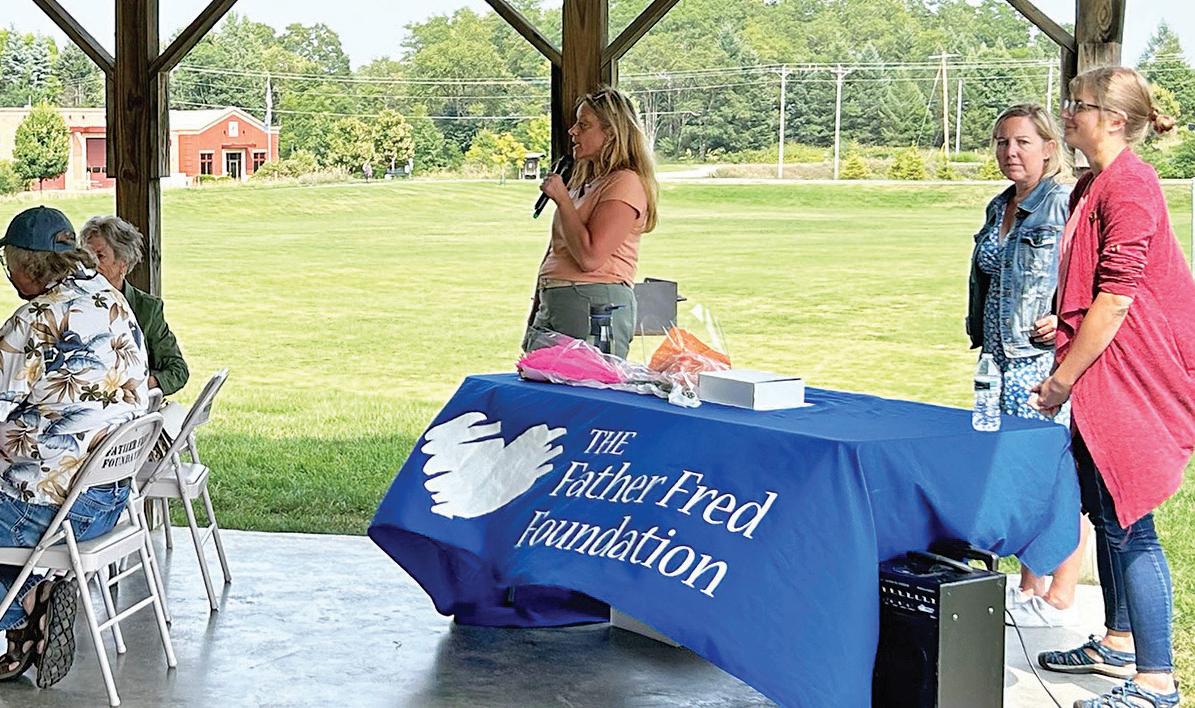
The Father Fred Foundation serves individuals and families across the five-county northwest Lower Michigan region by providing food, clothing, and financial assistance. The organization’s mission is to “offer help, hope, and compassion to anyone with essential needs,” whether it’s help with rent and utilities or filling the refrigerator with fresh food.
Less Than $100: Cold weather gear for Father Fred’s clothing and household department; needs there include donations of coats, boots, heavy socks, hats, and gloves, which “are always in need during the winter months.” Father Fred also urges supporters to volunteer, whether it’s for an hour, a day, or a year. “We welcome extra help at any time to keep our costs down and to serve as many people as possible,” said Executive Director Candice Hamel.
Less Than $500: A new smart TV for Father Fred’s guest lobby, “to share information about services, upcoming events, and resources” with visitors.
Sky’s the Limit: A complete software systems upgrade, to streamline real-time data entry of guest services and “reduce paper and post-services data entry.”

Described as a “rural prosperity incubator,” Grow Benzie “accelerates the impact of grassroots projects, small-scale nonprofits, and food and farming enterprises.” Launched in 2008 at a then-abandoned four-acre plant nursery in Benzie County, Grow Benzie functions by inviting local residents, organizations, and volunteers to its campus to utilize its incubator farm, community gardens, event center, commercial kitchen, co-working office spaces, sewing studio, bee apiary, and more. The organization also provides a variety of other services, such as bookkeeping, grant writing, and volunteer management. The goal is to help lift up volunteer-driven organizations, which often struggle in small rural areas.
Less than $100: “Subscribe, like, follow, and click Grow Benzie posts on Facebook, Instagram, and YouTube for one month,” Executive Director Josh Stoltz said. “In addition, subscribe to our monthly newsletter on our website, or visit GrowBenzie.org and click around our updated pages, infographics, and photos to gain clarity about the organization.”
Less than $500: New, comfortable and ergonomic office chairs; a gift certificate to purchase annuals (flowers) in the spring for campus beautification; a light for the Grow Benzie roadside marquee; metal signage for wayfinding and plant identification throughout the nonprofit’s four-acre campus; excavator work to help alleviate runoff damage in the parking lot.
Sky’s the limit: “Someone paying off the remaining $83,000 balance of our mortgage would allow us to immediately redirect those payments toward increased staffing, which in turn would enable us to expand services and rental revenue,” Stoltz told the TCBN



Our Missio
Since 1941, Young Life have been showing up basketball games, han the local lunch spot, an friendships, family, co and church bonds, and pursue the world thou of God Young Life Lea been in Grand Traverse actively sharing their m introducing adolescent christ and helping them their faith
Who We Serve
Young Life (High Scho WyldLife (Middle Scho YoungLives (Teen Mom


Based in Suttons Bay, the Inland Seas Education Association (ISEA) allows learners of all ages to get hands-on learning experiences aboard traditionally-rigged tall ship schooners. The organization carries a mission “to inspire a lifetime of Great Lakes curiosity, stewardship, and passion in people of all ages.” “We are convinced that the scientists and citizens who will solve the Great Lakes’ problems of the future will sail aboard Inland Seas’ ships today,” ISEA proclaims on its website. Since it was founded in 1989, the nonprofit has tallied more than 165,000 program participants.
Less than $100: Replacement motors, fittings, and batteries to support ISEA’s popular underwater remotely operated vehicle (ROV) challenge.
Less than $500: A dock box for storing underwater ROV materials at Discovery Pier; larger dissection trays with foam pads for pinning sea lampreys as part of ISEA’s lamprey dissection program; a replacement Manta Trawl filter for conducting microplastics research; replacement equipment for the Benthos station, which teaches learners about the bottom-of-the-lake ecosystem.
Sky’s the limit: 15 new mattresses to support overnight programs on the schooner Inland Seas – an approximately $7,000 value, according to ISEA Executive Director Fred Sitkins; new electrical and replacement decking for the schooner dock in Suttons Bay.
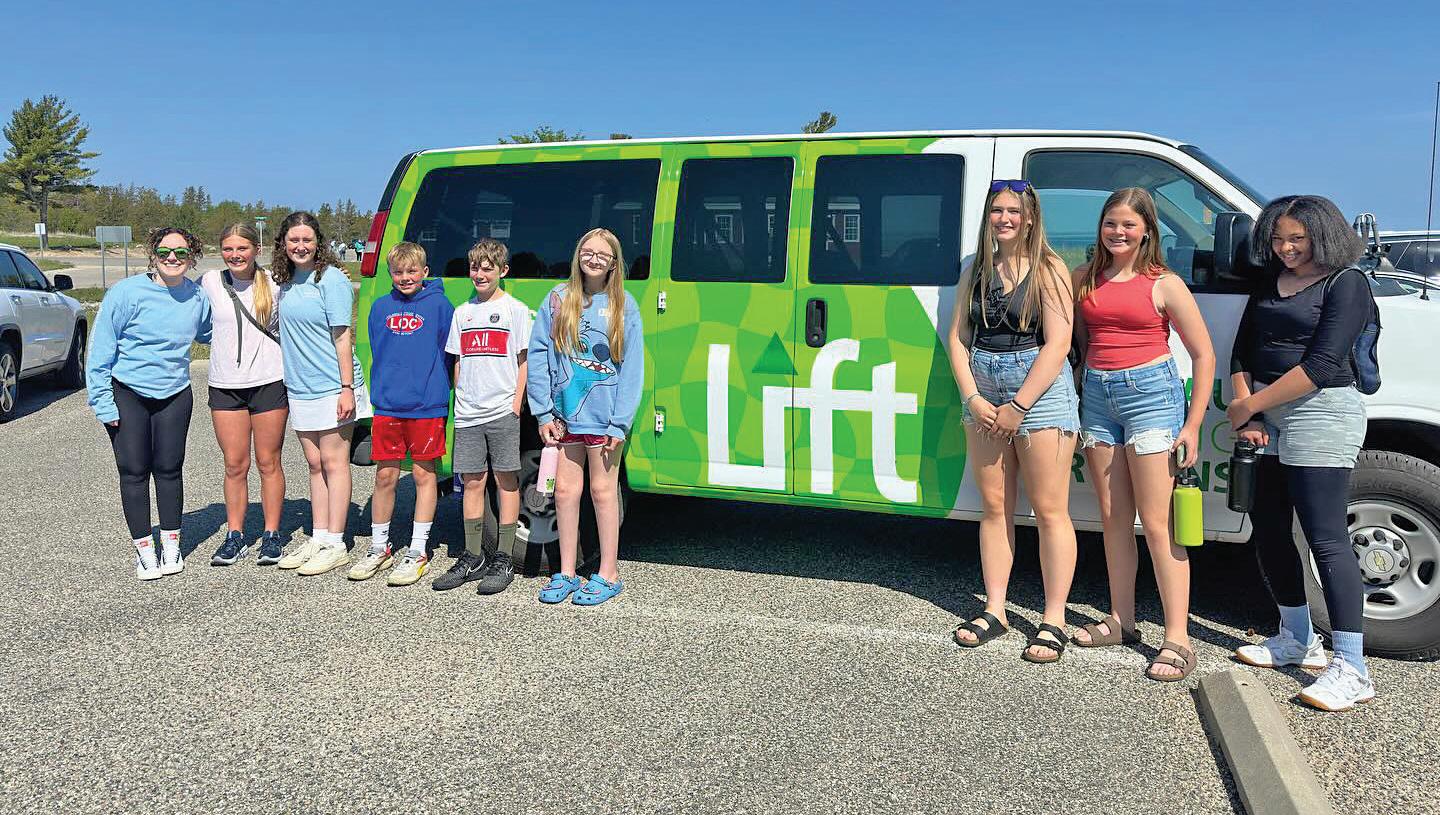
Started in 2017, LIFT is an out-of-schooltime mentorship program that “empowers Leelanau County’s youth to discover and embrace their strengths.” The organization seeks to “provide a safe environment for local teens, where they can develop social and emotional skills through enriching activities and the support of caring community members.”
Though LIFT began with an exclusive focus on Suttons Bay, the nonprofit now has an affiliation within three Leelanau school districts (Suttons Bay, Glen Lake, and Northport) and is in the midst of an “exploratory year” with Leland that could add a fourth district to the list. LIFT currently serves over 600 teens per year.
Less than $100: Snacks; gas cards; board games or card games; puzzles; yard games; art supplies; sports equipment.
Less than $500: Desk chairs; coolers; new printers; a Nintendo Switch; noise-canceling headphones; smart TVs.
Sky’s the limit: A trailer and a fleet of mountain bikes with helmets, all for LIFT’s summertime biking adventures.


The Northwest Michigan Coalition to End Homelessness is a collaborative group of dozens of local stakeholders – including shelters, health care providers, nonprofits, social services agencies, and government entities – that work together to make homelessness “rare, brief and one-time across northwest Michigan.” The collective’s major goal is to end chronic homelessness in the region by 2028.
Less than $100: Basic needs items for people experiencing homelessness – which, in the winter, includes cold weather gear like coats, snowpants, winter boots, hand warmers, hats, and gloves, along with always-needed items like backpacks, toothbrushes and toothpaste, or deodorant. “Basic needs items can provide some immediate relief, ensuring that people experiencing homelessness have essentials like food, hygiene supplies, and warm clothing to survive daily challenges,” said Executive Director Ashley Halladay-Schmandt. “These items not only meet urgent physical needs but also offer dignity and stability, supporting individuals on their path toward housing.”
Less than $500: Supplies for “welcome home baskets,” which the Coalition provides to individuals and families who are moving from homelessness into new homes. “When you’re starting with nothing, a basket full of essential items can make a new place feel like home and support long-term housing stability,” Halladay-Schmandt explains. Each basket contains roughly $160 worth of items, including toilet paper and paper towels, cleaning products, shower curtains, and more.
Sky’s the Limit: Rental assistance for people experiencing homelessness. According to Halladay-Schmandt, it costs around $13,500 per year to pay rent and provide supportive services to maintain someone in their housing. “Conversely, it costs around $35,000 per person, per year to maintain a person in homelessness,” she added.
TC Paw Cat Rescue seeks to “provide a second chance to cats that have been abandoned, found as strays, or surrendered by their owners.” In addition, the organization works with local veterinarians to “create the best outcome for all animals and nurture the human-animal bond through careful placements, assessing and thoughtfully addressing animal needs, and considering the health and safety of both animals and our communities.“ The organization helps cats and kittens in the greater Traverse City area through spay/neuter, fostering, adoption, education, and community collaboration.

Less than $100: Cattery cleaning supplies, including 13-gallon trash bags, dish soap, and disinfectant wipes; dry kitten food (Purina One Healthy Kitten), wet kitten food (Purina One or Fancy Feast), dry cat food (Purina One Indoor Advantage), and adult wet food (Purina One, Fancy Feast, or Friskies); unscented Tidy Cats litter; litter boxes and scoops; cat toys; cat beds; scratch pads; gift cards to Amazon.com or Chewy, a popular online retailer for pet-related products.
Less than $500: Annual subscriptions for Constant Contact (TC Paw’s email newsletter platform) or Square Plus (its payment processing account); a Square Terminal all-in-one credit card reader; cat towers; microchip scanners; a digital photo frame to display all cats and kittens available for adoption; True Catch cat traps and Wi-Fi enabled outdoor motion sensor cameras for locating missing cats or TNR (trap-neuter-return) operations.
Sky’s the limit: A shelter location and building with vet care facilities for vaccinations, spay/ neuter and surgical services; a Cat Cafe where TC Paw could showcase its cats and have a way to bring in more funds; permit costs for food/alcohol at annual spring fundraising event.
The Women’s Resource Center (WRC) works “to protect, shelter, and empower people impacted by domestic and sexual violence.” The nonprofit offers free and confidential services to all survivors of such situations.
Less than $100: Welcome packages for survivors coming to stay in the WRC shelter, which could include shampoo, toothpaste, toothbrush, socks, deodorant, and other basic needs items; cleaning supplies and laundry soap; diapers of all sizes; hygiene products; snacks that are simple for school lunches; small new toys for kids that can be given as gifts when they leave; businesses in the community hanging WRC posters, so the organization can reach more people.

Less than $500: A new quality vacuum for the WRC transitional house; new comfortable chairs and coffee table for the organization’s waiting room, or “uplifting artwork” for the lobby.
Sky’s the limit: An update to the WRC playroom, which Director of Donor Engagement Jamie Bell said “is used frequently when parents are in appointments.” Per Bell, “everything in there is a little worn” and in need of replacement. “An upgrade of toys, changing table, and storage would be appreciated,” she said. “We would love to add a TV where we can show cartoons, and a privacy screen for nursing moms.”







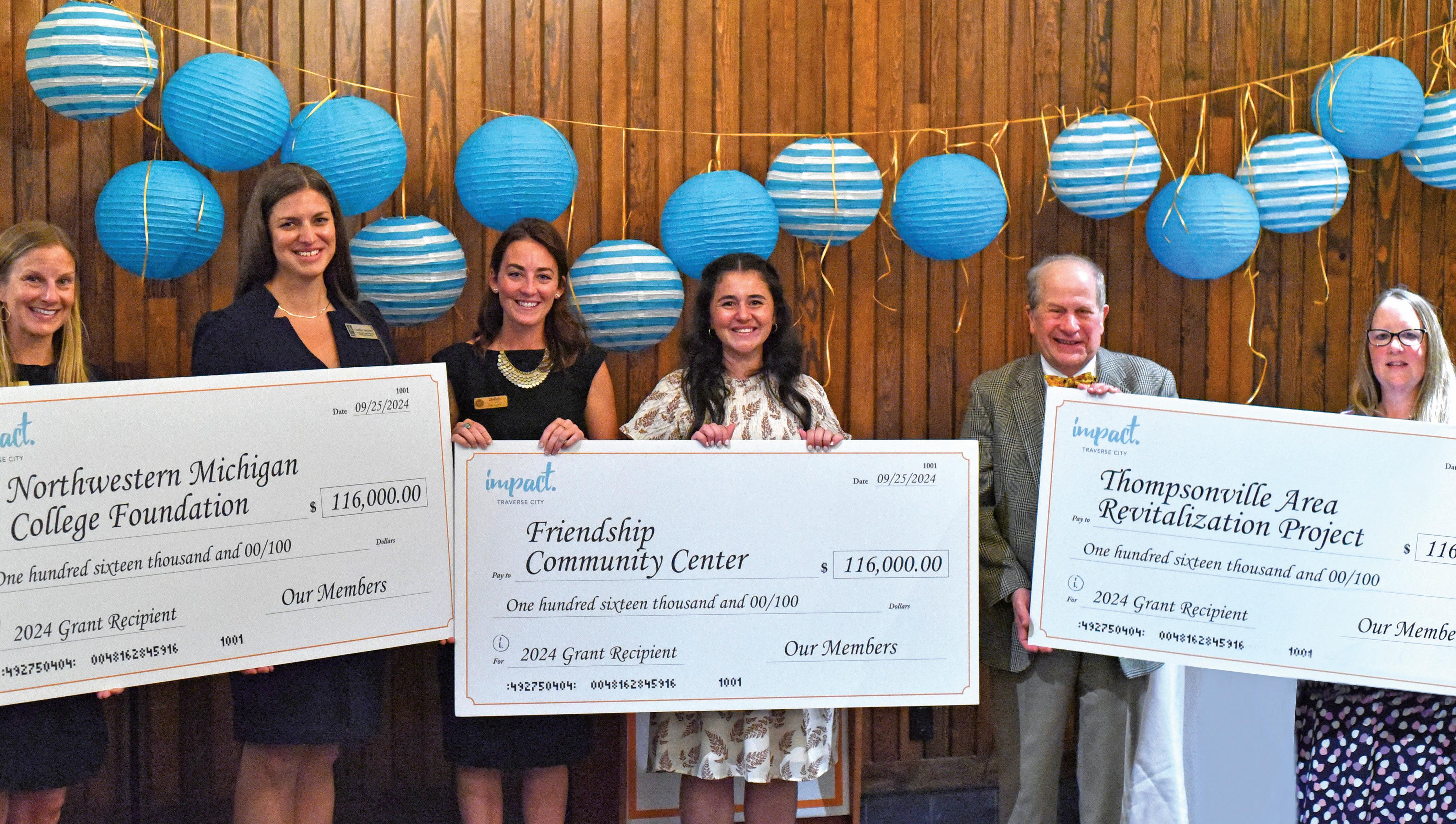
By Kierstin Gunsberg
Women-founded businesses in the U.S. drive an impressive $2.7 trillion in revenue annually, yet capture less than 3% of the country’s venture capital funding.
It’s a major gap that the Traverse Citybased Boundless Futures Foundation (BFF) wants to close. Started in 2023 by Good Bowl founder and entrepreneur Soon Hagerty and her husband McKeel, BFF awards grants and mentorships to help female-led businesses overcome barriers – financial and otherwise – that stymie growth.
“There are uphill battles when it comes to being a female founder,” said Soon Hagerty, pointing to a lack of early-stage capital as one of the largest hurdles. “Talent is distributed equally, but opportunities are not.”
BFF’s EmpowHer grant, which awards up to $25,000, was created to address those early funding needs and has so far been awarded to over a dozen startups
across the country including Traverse City’s own Archie’s Dog Co., an all-natural dog treat brand.
When choosing BFF’s grant recipients,
northern Michigan community, she’s familiar with the challenges women face navigating success both in their business and outside of it.
“It’s just fantastic when people who don’t always feel like they’re making a difference on their own are able to join their contribution with all these other women.”
Kristin Marinoff, co-founder, 100 Women Who Care Grand Traverse and Leelanau County
“we look at their business plan, we look at their critical thinking,” said Hagerty, adding that the foundation requires recipients to make a positive social impact, whether in their product, service, or a charitable pledge of their profits.
Capital isn’t the only obstacle when it comes to entrepreneurship, says Hagerty. As a wife, mother and member of the
“We’re in a special, really positive time where women can be all things,” she said. “But with that comes a lot of pressure.”
Access to mentorship connections, which the foundation also provides, and early-stage capital, are critical to long-term entrepreneurial success when balancing those roles.
“You need both of those things from a
technical standpoint to really have a great chance,” she said.
Like Hagerty, more and more of northern Michigan’s female leaders are looking for ways to spread capital. At Impact100 Traverse City, capital is going right back to local nonprofits in the form of grants.
“It’s regular women who have planned and set aside funds,” explained Lindsay Raymond, president of Impact100 Traverse City.
Raymond emphasized “regular” because Impact100’s funding model is anything but. One hundred women pay a $1,000 annual membership fee to the organization. Multiply all of those zeros and the total annual membership revenue comes out to a hefty $100,000 which is pooled and awarded to a local nonprofit or organization. Since launching in 2017, Impact100 Traverse City has awarded more than $2 million.
“We get a lot of applications every year,” said Raymond, who said that grant recipients are chosen by the membership via a vote at their annual meeting,
where finalists present their causes and initiative plans. “We want them to dream big. They need to spend the entire grant amount within a 12- to 18-month window.”
While smaller-scale grants from other sources help fund the day-to-day operations at nonprofits, Raymond says Impact100’s six-figure grants enable organizations to scale their goals.
“People are reaching out to us to really grow and breathe life into a specific initiative or project,” she said.
With a current membership of 348, the woman raised $348,000 in 2024. Looking toward 2025, they’ve set a goal of reaching 400 members by April, with an anonymous donor pledging an additional $100,000 to the funding pool if that target is met. If achieved, it would mean northern Michigan philanthropies could see a combined $500,000 boost later next year.
This year’s grants were split evenly among three recipients: Leelanau’s Friendship Community Center, the Thompsonville Area Revitalization Project, and the Northwestern Michigan College Foundation.
At NMC, the $116,000 grant will support the purchase of a 3D printing arm for the college’s Construction Technol-
“We’re
– Soon Hagerty,
co-founder, Boundless Futures Foundation

the new equipment and resources could attract more students, including female learners who currently represent only 10% of NMC’s construction students.
With the increase in cost of living expenses, Impact100’s $1,000 annual membership isn’t an easy amount of money for most women to part with, admits Ray
Yet, despite the dollar amount and the rural membership area, the group’s numbers have only grown since its debut-year headcount of 255.
“It speaks a lot about the women in our community,” she said.
Meanwhile, when TCAPS’ Student Support Network (SSN) saw a need to
bers of 100 Women Who Care Grand Traverse and Leelanau County pulled out their checkbooks.
The group is another giving collective that pools their funds to support local causes. Members gather quarterly at Traverse City’s Country Club, where they hear pitches from three local charitable



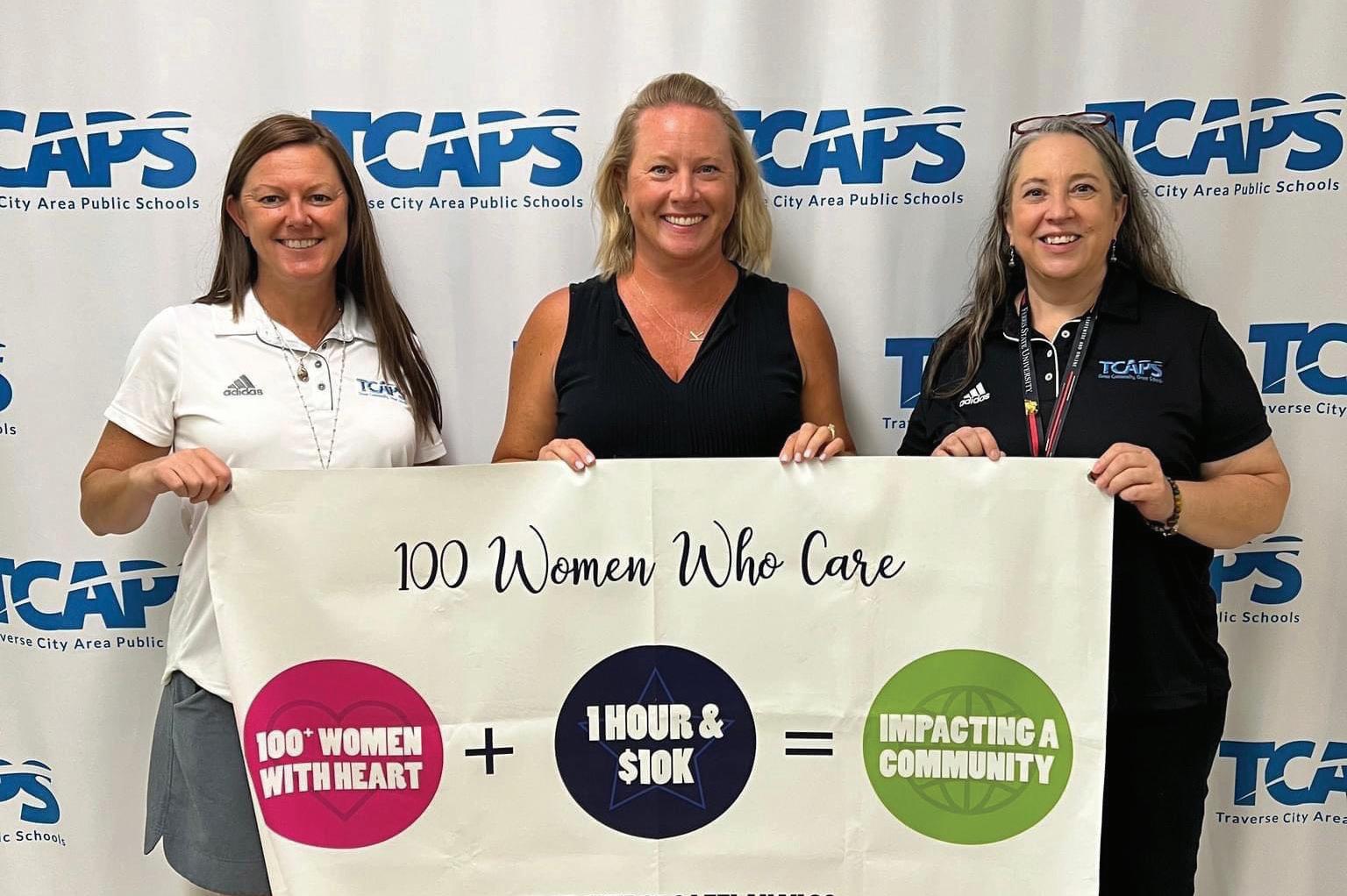
$100 to. With a membership goal of 100, their current membership stands at 115.
The giving strategy is straightforward, explains Kristin Marinoff, who established the chapter with her mother, Renie Cutler, in late 2011.
“The women who are part of the group write their $100 check directly to that winning organization,” said Marinoff. “It’s super efficient. We meet for one hour from start to finish and at the end of one hour $10,000 (or more) is given.”
When she started the chapter, Ma-
rinoff was a mom with young kids who knew she wanted to give back to her community but didn’t know where or how to find the time.
After learning about 100 Women Who Care – which was founded in Jackson by Karen Dunigan in 2006 before expanding nationally – she knew it was the right fit for her schedule and budget.
Marinoff says there are some members of the group she’s never met because their own busy schedules resign them to voting absentee and mailing in their donation.

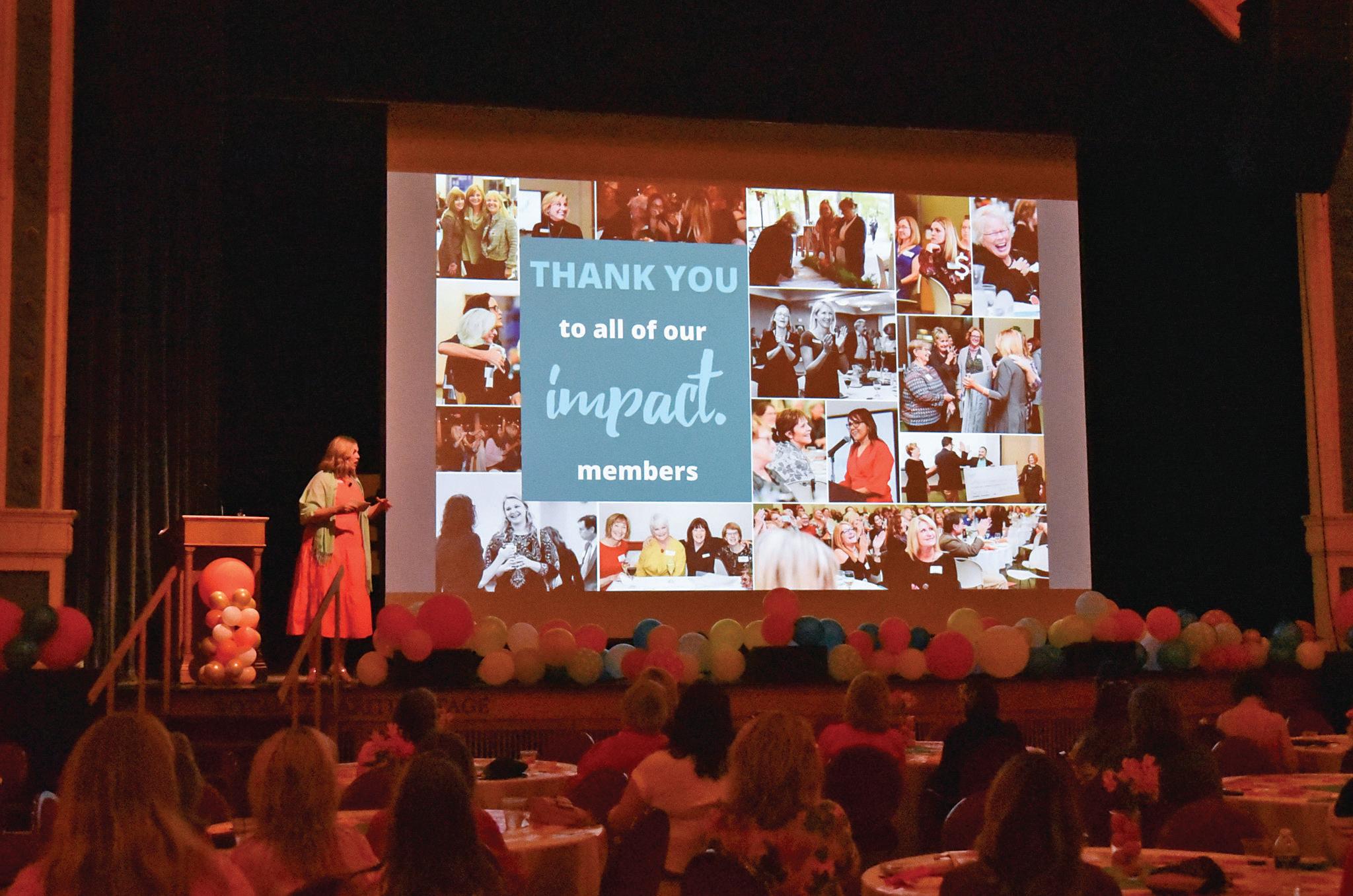
“It’s just fantastic when people who don’t always feel like they’re making a difference on their own are able to join their contribution with all these other women,” she said. “What might have been $100 is then $10,000 very easily.”
So far, the group’s funding has totaled close to $500,000.
To amplify its impact, 100 Women Who Care – Grand Traverse and Leelanau County recently partnered with the Richard M. Schulze Family Foundation, which matches some quarterly donations up to $5,000, increasing $10,000 dona-
tions by 50% to $15,000.
“I like to say we’re for the little people,” said Marinoff, explaining that her organization’s small scale funding model requires less vetting and opens the grant process up to more grassroots causes that might otherwise not qualify for larger grants.
“That $10,000 has allowed an organization to just get up on their feet or maybe keep their lights on and keep their doors open until other funding comes through,” she said. “So, you know, we’re a much smaller giving organization, but I still think equally as impactful.”












By Art Bukowski
The hiring pinch is real.
From full time to part time and white collar to blue collar, employers of all stripes have struggled since the pandemic to find the right people for various openings. While there are signs that this trend is starting to soften, it’s still very much forcing employers to think outside the box when it comes to attracting and selecting talent as 2025 approaches.
Nonprofits are not immune to this trend, and may be in an even tougher spot due to salary or other constraints. As many of these nonprofits are donor funded, there’s a very heavy focus on making sure they have the right people on their fundraising team. Without money coming in for operations, things can get tough in a hurry.
While it’s natural for employers of all kinds to seek candidates with direct experience, fundraising experts strongly encourage managers to not be blinded by resumes. This is arguably more important than ever, as candidates with experience might be harder to find anyway.
“If you’re filtering or removing people as possibilities because they don’t meet fund development experience qualifications, you’re really missing out,” said
Anthony Rupard, a Traverse City-based consultant who works with local nonprofits and those across the country. “I understand why you’d be more attracted to people who have experience, but if you’re insisting on qualifications based on it, there are some talented people who aren’t getting in the door.”
Rupard spent many years heading local fundraising teams before forming the Solvent Group, which (among other services) helps nonprofits with their fundraising efforts. He started his career as a counselor and educator before one of his bosses noticed his knack for relationship building, leading to his career as a fundraiser.
“People kind of fall into fundraising; it’s not something that most people grew up wanting to do,” he said. “Early in their career or in the middle of their career, someone else encourages them to consider it.”
What that means, Rupard says, is that some of the best fundraisers around came from entirely different careers anyway, making their lack of direct experience irrelevant. Rupard works with clients (his firm conducts searches) to

look for the type of people who have the personality and skill set to build real, genuine relationships. Experience in fundraising is a welcome (but not necessary) bonus.
“Emotional intelligence is really critical,” he said. “We want people that have really strong soft skills that can build relationships through conversation. They have to be really good listeners…develop rapport and consistently stay engaged with folks in the way you’d do with friends and family.”
Rupard recalled observing a friend at

a social gathering and marveling at her interpersonal communication skills. As was the case with Rupard’s boss all those years ago, he suggested that she enter the fundraising field.
“I said ‘You’re full of open-ended questions and you’re constantly getting people talking. You’re not dominating any conversation; you’re reading the room. You’re very observant. You bring energy,’” he said. “These are all of the characteristics that make a good fundraiser.”
But nonprofits, especially small ones,
can still be “seduced by resumes” and be very hesitant to hire people without experience, Rupard said. Aside from potentially missing out on good hires, there are other pitfalls in sticking to experience alone, including a glut of ineffective fundraisers that have built experience without being all that good at their job.
“Those folks can talk the talk. They can tell you how to fundraise. But because you can’t see them in action, there’s a lot of misses on hiring people just based on resumes,” he said. “A lot of nonprofits also don’t have strong major gift fundraising experience in-house, so they don’t know what to look for in interviews.”
Rupard’s team also coaches nonprofits to look for passion. While there are “parallels and overlaps” with sales positions, he says, fundraising is far less transactional and more mission-driven and idealistic.
“It’s critical to be passionate about the non-profit you’re raising money for so you can better tell that story and connect with philanthropists,” he said. “Most people in sales are probably more driven by the idea to make money and have a career, and I think typically you see a little bit more altruistic folks involved in fundraising.”
Ultimately, Rupard says, fundraising comes down to the art of developing meaningful relationships and the science of fundraising itself (knowing the various mechanisms in which donors can convey money, etc.). When it comes to the former, most candidates either have it or they don’t.
that she was the director of development at Northwestern Michigan College and spent time in the development office at the University of Michigan.
She echoes Rupard’s sentiments about what can be taught and what is arguably innate.
“I have seen folks who have been very successful in fundraising who have come from communications, hospitality, even theater. It’s not like there’s only one alternate (career) that translates. It’s all of those positions where you are using skills to connect with people and meet goals simultaneously.”
- Paris Morse, Director of Development, The Leelanau Conservancy
“You can teach the science of fundraising, but the art is harder to teach,” he said. “Those natural instincts and soft skill sets go a long way.”
Paris Morse is the director of development at the Leelanau Conservancy, which works to permanently protect natural land and farmland from development in Leelanau County. Prior to
“Somebody can learn information about the programs (we’re fundraising for) and information about the nonprofit. That and the actual science of fundraising are all things that I can coach and train people on,” she said. “The key thing is that they’re able to make those personal connections and are truly interested in learning and connecting with people.”
Morse recently hired two people for
her fundraising team who rose to the top of the candidate pool despite not having traditional fundraising experience. It’s not the first time that happened, and probably won’t be the last.
“I have seen folks who have been very successful in fundraising who have come from communications, hospitality, even theater,” she said. “It’s not like there’s only one alternate (career) that translates. It’s all of those positions where you are using skills to connect with people and meet goals simultaneously.”
She cited a lot of the same “soft skills” Rupard mentioned as being key to success.
“I think a true interest in learning is key,” she said. “And those strong interpersonal skills like listening are also very important. Because what you’re doing (in fundraising) is connecting the work of the organization to the donor’s interests and truly making that bridge.”
Rupard and Morse also speak of the importance of being self-driven and working independently as they cultivate these relationships.
“One of the things that nonprofits sadly face a lot of times is they hire somebody who really doesn’t have that drive … and they get kind of stuck in the office trying to raise money behind the computer, and you can only go so far doing that,” Rupard said.










By Craig Manning
If you know Dan Buron, you know he’s a man with big goals.
At the helm of Goodwill Northern Michigan since July 2016, Buron’s aims for the organization are daunting things, like solving local hunger and ending chronic homelessness. Working with organizations like Safe Harbor and the entirety of the Northwest Michigan Coalition to End Homelessness, Goodwill is making significant strides on both counts.
One recent victory: getting the Traverse City City Commission to support a variety of initiatives to address local homelessness, like giving Safe Harbor the green light to pursue becoming a year-round shelter, or committing $40,000 annually for the next two years to support day shelter services at Jubilee House.
Even before Buron was a key player in Traverse City’s conversation about poverty and homelessness, he was a veteran of this type of work. In fact, Buron has been working for Goodwill, in some capacity, for 25 years.
Before moving to Traverse City in 2016, he was the executive director for Goodwill Industries of Southeastern Michigan, based in Adrian. Prior to that, he was the chief workforce development officer for Goodwill Grand Rapids. His resume also includes stints at Goodwill’s national office in Washington, D.C. and at Goodwill Hawaii. And nowadays, he even sits on both the board of directors and the council of executives for Goodwill International. It’s an impressive resume, and none of it would exist had it not been for Buron’s sister.
Goodwill Northern Michigan leader
Buron has big goals and big challenges
“What got me into this field as a whole was the fact that my sister was developmentally disabled,” Buron said. “She was about 11 years old when I was born, so we kind of grew up together. She was at home, and I got to know her and all her friends quite well. And what I came to recognize, as I grew up, is how fortunate she was to be in a very supportive family. My parents did a lot to make sure that she had the best that she could have in terms of developing her full capacity and becoming as independent as she could possibly become. She was never going to be fully independent, but she was able to work, and she could live outside of the home with some supports. I always wondered: What if she grew up in a different environment, or a different family situation where they might not have had as many resources?”
Karen Buron, Dan’s sister, grew up to compete in the Special Olympics, winning two gold medals in cross country skiing at the 1985 World Winter Games in Park City, Utah. Karen passed away in 2001, but Buron says he carries her legacy forward every day in his work with Goodwill.
“Because of her, I’ve always wanted everyone, regardless of the circumstance, to have the opportunity and capacity to fully explore who they are and what they could become,” Buron said. “From a very young age, I was leaning toward working with populations that might be less fortunate or disadvantaged in some ways.”
While Buron’s work with Goodwill has taken him to a variety of different places, he’s found that the unique attributes of northern Michigan have made
this particular Goodwill an especially rewarding one to lead.
“What’s really nice about Traverse City is that the people here really like to work together; they don’t necessarily agree, but they collaborate,” Buron said. “On top of that, we are a little bit geographically isolated, and that makes it a really great place to try new and innovative ways of getting at a problem. Traverse City is a small enough community for it to be possible to do things that are really complicated. But, as the regional hub for northern Michigan, it’s also large enough to have some of the complexities that you have with other larger-population areas. As a result, we have an opportunity here to do things in really innovative ways that can then become a model for other rural communities.”
If Goodwill Northern Michigan does become a recognized innovator, it will likely be in one of two areas: the fight to end homelessness or the fight to end food insecurity.
On the homelessness front, Buron notes that Goodwill Northern Michigan is currently working to get more involved in housing development and housing access. Using funds from the American Rescue Plan Act, the local Goodwill helped developer Woda Cooper close a funding gap for Annika Place II, a 52-unit housing project on Hastings Street that will include 19 Permanent Supportive Housing units set aside for individuals or families transitioning out of homelessness. Goodwill hopes to leverage the visibility and success of that project to tackle similar projects in the future.
As for food insecurity, Buron says
Goodwill leans on its partnerships with other members of the Northwest Food Coalition to tackle things like curbing food waste in the region and distributing “healthy, nutritious food” to the people who need it most. Key to that mission is Food Rescue, a program within Goodwill Northern Michigan that “rescues, harvests, repacks, and distributes 2 million pounds of food annually,” per its website. Even with Food Rescue, though, Buron stresses that Goodwill can’t fight northern Michigan’s food access issues on its own.
“One of the things you’ll hear about any Goodwill organization is that we work very closely with our partners,” Buron explained. “And there’s no way we could do the work that we do if it wasn’t for the Food Coalition. We distribute food to the different pantries, but the pantries make sure it gets to the individuals. If they weren’t doing what they’re doing, we couldn’t do what we’re doing. In a nutshell, that’s really how I see our responsibility: It’s about making sure that we do things that we’re good at, and support people doing things that they’re good at. Because then we’re not trying to compete; we’re just working together to build a bigger pie.”
Sitting on a variety of high-profile boards helps give Buron that big-picture attitude. At the national level, he serves on the Goodwill Board of Directors, which puts him in regular communication and collaboration with the leaders of other local Goodwills.
“One of the advantages (of having that board seat) is that I certainly become more aware of the some of the challenges
that all Goodwills are facing,” Buron said. “Some of the things we’re experiencing (at Goodwill Northern Michigan) are more local issues, but some of the things we experience are larger trends. Talking with leaders from the other 150 Goodwills, I do have a firsthand look at things that might impact our organization in the future.”
One challenge hitting every local Goodwill right now: the shifting tides of donation-based resale. Historically, the operating budgets of all Goodwills have been heavily supported by the revenues from Goodwill retail stores, which in turn depend on the clothes, toys, and other belongings that people decide to donate to the organization.
“Seven percent of our total budget comes from the stores, and about 50% of the budget for our individual programming comes from the donated goods, so it’s quite significant for us and the community,” Buron said. “The challenge is that we don’t know whether we’re going to be able to continue growing our donations of items for our stores, because a lot of things have changed in that market.”
One factor at work is the simple shift away from brick-and-mortar shopping and toward online buying. Another is the rise of Facebook Marketplace and other channels that have made it “much easier than it used to be for people to sell things on their own.” Finally, even if someone is set on donating unneeded possessions,
Buron says there is simply “a lot more competition now for donations than there was before,” both from other nonprofits with resale shops – Traverse City has a few of those, like Women’s Resource Center and Habitat for Humanity – and from for-profit entities.
“We have to be responding to this new landscape and making sure that people can see the value of donating to us when
national Goodwill board means valuable bridges between Goodwill Northern Michigan and other Goodwills across the country, the Traverse Connect board provides a similarly important link between the organization and the local business community.
“I see our role with Traverse Connect as being very much aligned,” Buron said. “They want to create a stronger, more
“We have to be responding to this new landscape and making sure that people can see the value of donating to us when they have a lot more very easy options than they did before. And to do that, I think we have to make sure that Goodwill is still seen as something they want to contribute to.”
–Dan Buron, Executive Director/CEO, Goodwill Northern Michigan
they have a lot more very easy options than they did before,” Buron said. “And to do that, I think we have to make sure that Goodwill is still seen as something they want to contribute to. We need to do more to stay relevant in people’s lives and in the community, so that people want to support us.”
One way that Buron himself tries to stay present and relevant in the community is through his participation on another board: the Traverse Connect Board of Directors. Where Buron’s role on the
vibrant community. We want to create a stronger, more vibrant community. Now, our roles are going to be a little different. Their focus is going to be more around economic development. Ours is going to be on ensuring that all people have an opportunity to be part of that vibrant community. But it’s all a part of that same pie, and I think it’s really important that both of us are engaging with each other, and that the business community is engaging with this nonprofit community. Connecting all those pieces is what’s going to
make this community stronger.”
For his part, Buron is confident that just about everyone who lives in the Grand Traverse region “really does want a community where everyone has an opportunity to be fully engaged with work, housing, and the food that they need.” He’s so confident, in fact, that he’s not worried when the public pushes back against some of the work that his organization and its partners are doing.
Case-in-point? The backlash that occurred earlier this year around the idea of a year-round Safe Harbor. While many acknowledged the need to do something to help the people experiencing homelessness in the community – particularly those at the homeless encampment popularly known as “The Pines” – some questioned the impact a year-round Safe Harbor would have on nearby residential neighborhoods.
“In a lot of ways, I think this attention has been really good,” Buron said when asked about the opposition to expanding Safe Harbor’s operations outside of the winter months. “The idea that now we’re all thinking about what we should do in order to provide better services to people who are experiencing homelessness? That’s a good thing. People have different views of what that might look like, but we’re all at the table and we’re having a conversation, and that has been very meaningful.”





























By Renee Sovis, columnist
Many philanthropic families face a common question: How can we get the kids involved?
It’s striking that each preceding generation expects young people to take charge and create positive change, yet often fails to offer guidance on effective engagement in the charitable sector. This disconnect creates a frustrating dynamic, as the older generation wonders why younger individuals appear indifferent, while younger individuals feel excluded from the conversation.
After decades of decline in the rate of giving, the future of philanthropy requires a collaborative approach that acknowledges both the expectations and limitations present in intergenerational relationships.
The next generation — primarily millennials and Gen Z — will soon inherit an unprecedented wealth transfer of nearly $60 trillion in the U.S. However, this wealth is only one aspect of young philanthropists’ potential impact. Younger generations also bring unique perspectives, motivations and resources to charitable giving. Even so, it’s unrealistic to expect them to engage meaningfully without mentorship and support from their elders. Older generations must share their knowledge and embrace new trends in philanthropy that reflect the evolving social consciousness of today’s youth. Trust, after all, is a two-way street.
When considering the next generation, it’s important to recognize that engage-
ment isn’t limited to those with significant financial resources. In philanthropy, we often refer to the “Five Ts”: time, talent, ties, testimony and treasure. While the emphasis often rests on treasure, the other four resources are crucial for fostering engagement. To mobilize the next generation effectively, we must understand their motivations and leverage these resources to create meaningful change.
Motivation for charitable giving among young people can stem from personal experiences, community needs, faith or the values learned in childhood. When working with philanthropic families to bridge the generational gap, we begin by examining assumptions around giving, money and identity.
Key questions arise: When did you first begin volunteering? What behaviors did your parents model regarding generosity? What personal values do you hold? What legacy do you wish to create? These inquiries clarify individual motivations and create a roadmap for a fulfilling philanthropic journey.
Acknowledging areas of contention is equally important. Many young people feel disconnected from their parents’ values or are unsure of their own beliefs about giving. Understanding these barriers is critical to fostering a more inclusive environment for charitable engagement. Common sentiments include, “I don’t feel like I can contribute meaningfully,” or “I don’t have the same priorities as my parents.” Open conversations about these barriers can foster a more inclusive environment for charitable engagement.
The Generosity Commission’s recent report likens charitable giving to exercise: It’s easier to cultivate the habit from an early age than to start later in life. To instill generosity as a family value, several strategies can be effective:
• Discuss your current giving practices with your family.
• Share your future plans and hopes for impact.
• Model the behaviors you wish to see, such as volunteering, mentoring, or serving on boards.
• Let your children observe these actions, as this can lay the foundation for a lifetime of engaged giving.
As children grow, so should their autonomy in philanthropy. The world is rapidly evolving and the next generation may prioritize different causes or methods of engagement. Giving Tuesday is an example of this shift. Now the single highest day of charitable giving by individual donors, it’s almost entirely driven by social media. Encouraging young people to engage in their way is more important than ensuring they mirror previous generations. Provide them with support, encouragement and guidance, but allow them the freedom to give confidently.
As young people mature, the importance of individual and family legacy becomes clearer, allowing them to step into philanthropic spaces — such as youth advisory councils, internships and grantmaking organizations — ready, prepared and with enthusiasm. If philanthropy is a family endeavor, particularly when managing substantial resources like a family foundation, bridging generational gaps becomes essential. Families with significant wealth carry a heightened responsibility to give effectively.
Engaging younger generations in philanthropy requires effort from both older and younger family members. By encouraging open communication, sharing knowledge and embracing new perspectives, we can cultivate a culture of philanthropy that’s inclusive, innovative and impactful.
The responsibility of building a better future doesn’t rest solely on the shoulders of the next generation; it’s a shared journey that calls for collaboration, understanding and a commitment to nurturing generosity. Together, we can bridge generational divides and empower the next generation to drive meaningful change in the world.
Renee Sovis is vice president of Detroit- and Traverse City-based Neithercut Philanthropy Advisors and a certified consultant working with multi-generational family foundations.






By David Mengebier, columnist
Giving is integral to a thriving community. By giving your time, talent, connections, voice or monetary contributions to a cause, you become part of a larger movement, striving alongside others to make a difference for the people and places you care about. Through giving, we can make the impossible feel possible because there is power and hope in working together toward positive change.
At the Community Foundation, giving is central to everything we do. We believe in the power of generosity to do great things. As your local giving partner, we’re committed to being a good steward of the assets in our care to support making life better for everyone in our region. Partnerships are key to putting our giving philosophy into action, because without them, we simply wouldn’t exist, nor would we see positive outcomes happen in our broader community.
Partnering with local people and organizations allows us to make thoughtful strides toward our ultimate goal: creating a region of healthy, resilient, thriving communities for all.
The solutions to community problems can often be found directly in our local communities. This is why it’s critical to connect with local people to not only understand their needs but also to engage them in supporting local solutions.
As your Community Foundation, we are firmly rooted in supporting this region of Antrim, Benzie, Grand Traverse, Kalkaska and Leelanau counties and the Grand Traverse Band of Ottawa and Chippewa Indians. We work with individual donors who come to us with giving capacities of all sizes to fund local needs, from new housing developments and addiction treatment services to preserving natural areas and supporting youth programs. We partner with donors who give $10 monthly to donors who leave an estate gift – both making a meaningful difference supporting the needs of our region.
A recent example of our donor partnerships in action is the story of our new endowment for diversity, equity and

Community Foundation partners with people, organizations to uplift community
inclusion. Established this year, the endowment will continue our work funding local organizations supporting marginalized populations, including individuals and families experiencing homelessness and poverty, and organizations led by community members of color, including Black and Indigenous people, as well as LGBTQ+, immigrant, neurodiverse, veteran, and disability community members. It was our dream to create an endowment so that equity and inclusion work across the region could receive ongoing, sustainable support in perpetuity. One of our donor partners approached us to explore an opportunity to make a bigger impact together.
This donor partner contributed a generous gift to establish the endowment for diversity, equity and inclusion, and he wanted to ensure that his gift worked alongside others’ giving. So, we got to work. We built out a campaign to engage our community of givers.
The results of the campaign blew us away: We raised nearly $170,000, with gifts ranging from $10 to $5,000. We also welcomed five new monthly donors and 22 donor partners who gave to us for the first time. While the positive results of this giving partnership are clear, what is perhaps even more meaningful to us is how partnering with a single individual turned into a collective partnership of 85 community members. That’s the power of giving together.
Donor partners come to us in many ways – by reaching out to us directly or by indirectly finding us through referrals from other supporters or local advisors. Referrals are an under-recognized form of giving. They allow you to tap into your connections to create a pathway to additional giving opportunities. By working with local advisors, including estate attorneys, financial planners, accountants and others, we help link a client’s giving
interests with ways they can make a difference locally.
This year, referrals resulted in the creation of our animal welfare endowment, jointly established by two donors. What’s interesting here is that these two donor partners did not know each other before establishing this endowment; rather, it was their shared giving interests that brought them together. Each donor came to us through referrals from their respective advisors.
After meeting with them and building a relationship over time to better understand their giving interests and how to align those with local needs, our team worked with them to launch the animal welfare endowment. The endowment is aimed at reducing animal suffering and building community awareness by supporting smaller, grassroots animal welfare organizations, which have been underfunded in our region.
This is a perfect example of how referrals can open the door to new connections and positive change.
In addition to partnering with individuals and their advisors, we often collaborate with community organizations. One way we do this is through the Northwest Michigan Community Development Coalition. As convener and member of the coalition, we work alongside more than 40 business, governmental and nonprofit partners to share information, align and leverage resources, and coordinate advocacy actions to drive economic, societal and environmental improvements for our rural communities. This collaborative spirit has led to several efforts in support of advancing shared goals.
This spring, for example, 10 coalition members representing our region’s nonprofit, public and private sectors headed to Lansing for our inaugural lobby day.
Together, we met with a variety of leaders in state government, advocating for funding for the Office of Rural Prosperity, recommending funding and policy reforms to make it easier for communities to build affordable housing, requesting full funding for grants through the Michigan Arts and Culture Council, and raising awareness about the challenges our region’s farmers are facing.
We also recently convened – alongside Rotary Charities of Traverse City –community partners working to identify supports and solutions for the chronically homeless in our community. This resulted in safety and sanitation facilities for individuals sheltering in the Pines, strategic discussions about transitioning Safe Harbor to a year-round emergency shelter, and a future task force that would continue developing long-term solutions to support our neighbors experiencing homelessness.
In addition, earlier this year, our region was selected as a local Press Forward chapter, which will create new opportunities and funding resources to support collaboration to strengthen our local news sector, which is critical to a vibrant, thriving community.
Taken together, each of these efforts – from working with individual donors and advisors to community organizations – showcase what is necessary for positive community change to happen. Partnerships of all shapes and sizes are integral to strengthening our region, now and forever.
David Mengebier is the president and CEO of the Grand Traverse Regional Community Foundation. He formerly served for 17 years as senior vice president of governmental, regulatory and public affairs for Consumers Energy, and president of the Consumers Energy Foundation. He serves on the boards of Munson Healthcare, the Council of Michigan Foundations, and Northwest Michigan’s regional economic development organization, Traverse Connect.







Holly Hack EXIT Realty Paramount, Traverse City

Kevin Endres Three West Commercial, Traverse City

Jonathan Oltersdorf Oltersdorf Realty, Suttons Bay
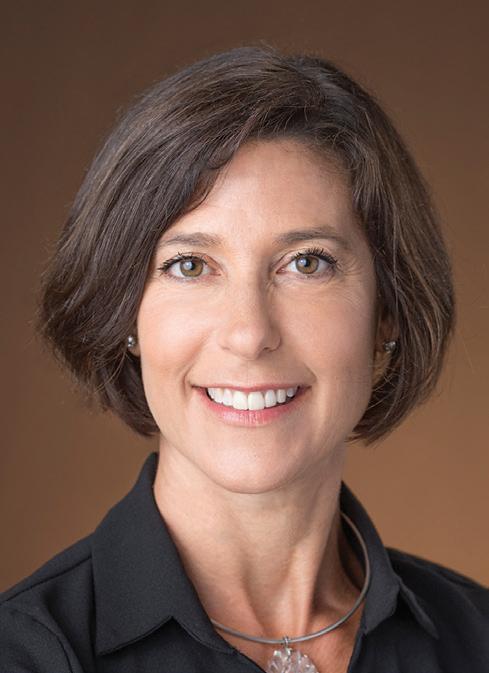
Ann Porter Real Estate One, Traverse City


City
By Art Bukowski
It’s December, and that means it’s time for the TCBN’s annual real estate outlook. We connected with agents and brokers throughout the region to see what’s on their mind as the calendar turns to 2025.
What trends or developments (in sale prices, volume, demand, etc.) do you expect to see in local real estate in 2025?
Oltersdorf: Affordability challenges and rising living costs in 2024 should have slowed the real estate market, but we just didn’t see that in any significant way. Inventory remains historically low, with Leelanau County still at 1/3 of pre-Covid levels. Year-to-date our median price has increased by 5-6% and the average price has increased 6-8%. Looking ahead to 2025, volume may dip slightly, but I’d expect prices to grow modestly at a lower rate, aligning with inflation. Nationwide, the average homebuyer age has risen by seven years, a trend I also see locally. Homes with main-floor primary bedrooms are in high demand, driven by an aging buyer demographic. Notably, 47% of this year’s sales in Leelanau were cash purchases, compared to 35% in GT County. Our market has remained resilient, and
I expect more of the same in 2025 with moderate price growth and strong cash purchases offering continued stability.
Hack: Interest rates and demand will continue to play a pivotal role in shaping the housing market in 2025, both nationally and locally. Nationally, existing home sales are projected to rise by over 9% yearover-year, with new home sales expected to jump by 11%. Locally, I anticipate a similar trend as home prices continue to soften, particularly in more affordable price ranges. This shift will likely create increased opportunities for first-time homebuyers, who have faced significant challenges over the past few years, especially those relying on government loans. Interest rates are expected to stabilize, likely settling in the low 6% range, which should further support affordability and demand. In Traverse City, we’re seeing a noticeable cooling in the Airbnb market, especially downtown, where saturation levels appear to have been reached. This
cooling may redirect investment attention back toward long-term housing options, further impacting local demand positively.
Endres: According to the trajectory we have seen through the third quarter of 2024 vs. the third quarter of 2023, the commercial market is trending upward across the board as it relates to total square footage sold (up 144%), total volume sold (up 95%) and average transaction sales price (up 35%). We expect to see continued activity and interest in the commercial market in the Grand Traverse region in 2025. We are seeing a strong demand in our market from national businesses looking to locate in our region, which includes anywhere from small retailers, quick service restaurants or suppliers and regional distribution companies like Amazon. While we only handle commercial real estate and development land, we do see a continued strength and demand for land for future multi-family developments.
Shimek: Sale prices have started to
level off the last six months of 2024. Homes are sitting for longer and that is okay, as inventory levels have come up significantly from last year. I expect inventory levels to continue to creep up a bit in 2025, making it an even more balanced market for buyers and sellers. The market we were in the last four years was not sustainable, and we are in a much more “healthy” market currently. I expect prices to stay pretty flat in 2025, but we do always see an uptick in prices in the spring and a more competitive buying market as a lot of buyers come out of hibernation after the winter, ready to look for a home again. This creates a higher demand, therefore you see more multiple offer situations in the spring typically. This is what happened in 2024 after the market hit a wall in October of 2023 then it came back like gangbusters around March of this year.
Zickert: Demand has declined across all segments relative to 2023, but in historical

terms, demand still exceeds supply across all price ranges. The condo market seems to be the most active segment in the last few months, but in most areas, although multiple offers are not as plentiful, they are still happening. Sellers do need to be aware that because demand has slowed, many homes will be overpriced for the current market. Next year, we expect the number of homes for sale to rise 5-10%, the number of home sales to also rise 3-5% and home values follow the same 3-5%.
Porter: We are so fortunate to live in such a beautiful area full of natural resources, community amenities and local pride, and I expect our amazing region to continue to be a popular landing place for both out-of-towners as well as current residents upsizing or downsizing. Based on this, 2025 should offer a steady real estate market, with water-
front always being the most sought-after property type. With interest rates expected to remain level and sellers wanting to capitalize on their equity, inventory and pricing will increase to a healthy balance. We are seeing a lot of climate migration, where purchasers are leaving an area of more drastic climate swings and effects than typical, which will continue to increase demand. This will continue on the trend of a seller’s market, but at a much healthier definition than what we saw during Covid.
What advice do you have for those who are buying or selling in the coming year?
Porter: The advice I have for sellers is to prepare your home for sale well before you intend to put it on the market. This
means making the necessary repairs, cosmetic improvements and decluttering. A qualified and experienced Realtor can guide you through this process. Buyers will have the ability to be selective in the coming year with a more balanced inventory, and these preparations will make your home more desirable and move-in ready. Sellers also need to price their home correctly. Gone are the days of multiple offers and inspection waivers, so price and presentation will equal a solid sale. The advice I have for buyers is to stay calm and make a good decision, with the help of a trusted Realtor. Trust the process of being pre-approved or know your financial options and have them lined up, have an inspection so you know what you are getting into and start your search early so you can be patient and find the perfect home.
Hack: In 2025, buyers and sellers
should pay close attention to both national trends and local market dynamics. Nationally, interest rates and housing inventory are likely to remain key factors. Buyers should prepare for potentially higher borrowing costs by securing pre-approval letters and budgeting for rate fluctuations. If inventory remains low, be ready to act quickly and strategically when a desirable property hits the market. Sellers on the other hand should prioritize preparing their homes for sale by focusing on curb appeal staging and pricing competitively to attract motivated buyers. Locally, demand for properties near the water, wineries and cultural hubs remain very strong. Buyers should seek out professional guidance to find hidden gems while sellers should leverage these unique selling points to maximize value. Staying informed and working with an experienced agent will make all the difference.

Shimek: For both buyers and sellers, the timing just has to be right for each personal situation. I always say the best time to buy or sell is when you don’t have to. ‘Life Happens’ is my most-used saying when it comes to real estate, and these are the least fun situations to work through, leaving families no choice on timing. My best advice is to find a great Realtor that you trust, get set up on a search in the area(s) that you are interested in and interview a couple lenders to see who fits your needs. Not every Realtor/lender will be a fit for your needs, so interview a couple and have your ducks in a row. I talk to many buyers who don’t want to start the pre-approval process until they find a home they like, and in most cases it’s too late when another offer comes in before they are pre-approved. Be prepared with a Realtor that is ready to go at the
drop of a hat when the right property hits the market.
Zickert: We don’t feel that rates will fall dramatically, but we do think prices will continue to rise, so odds are, for those who are looking to buy this year (or both
what is most convenient. Values should be rising in the low single digits, so the increases are not insignificant but also not so big to change important life decisions.
Oltersdorf: For buyers: Consider costs beyond the purchase price. Property taxes
“There is a lot of talk as to a commercial bubble that will burst mid-year in 2025. This will have an effect on pricing and a potential influx of inventory into the market.”
– Kevin Endres, Owner/Broker, Three West Commercial
sell and buy), sooner will be better than later (if rates do fall significantly, you can refinance to a lower rate). For sellers who are not also buying, values will rise, so there is not great risk in waiting, it’s more based on


Lisa
Peacock, RN, MSN, WHNP-BC Health Officer, Health Department of Northwest Michigan
can vary substantially depending on the township, city, or village. In Michigan, property taxes also ‘uncap’ the year following a property transfer, meaning you will not pay the same amount of taxes as the

current owner. Don’t forget to account for HOA dues and potential special assessments. Even without an HOA, a private road maintenance agreement may apply, and road maintenance expenses have increased significantly in recent years. These factors can greatly impact your budget and are often overlooked. For sellers: The days of pricing your home 10% over comparable sales and still receiving offers are over. It’s important to set a realistic price, or your home may sit on the market longer than expected, forcing you to lower the price later to attract buyers. While days on market are increasing, don’t worry - it’s still a seller’s market.
Endres: For those that are buying, I think some try to time the market and interest rates. I think we have seen that strategy not play out well in the last two years. On the commercial end, if your business needs to expand, then a slightly higher interest rate
Utilize design/build to construct a facility that provides high-quality dental services to families of any income.

Mike Brown Owner, Burdco

As providers of public health services, we can’t afford for things to go wrong. Mike Brown and Burdco help us meet the needs of our population in the very best way. Despite many challenges, our East Jordan dental clinic came in accurately–on time and on budget.
– Lisa Peacock, RN, MSN, WHNP-BC

must be worked into the cost of doing business. We see a lot of cash being invested into the commercial market, so I don’t think the interest rate is as sensitive for buyers buying as in the residential market. What we are going to see in 2025 are a lot of commercial loans coming due that originated in 2020 when the 10-Year treasury was at 0.50%. Those loans will need to be refinanced, and the current 10-Year treasury rate is 4.30%. This increase in the cost of money will inevitably put a lot of commercial loans upside down. There is a lot of talk as to a commercial bubble that will burst mid-year in 2025. This will have an effect on pricing and a potential influx of inventory into the market.
We keep hearing that out-of-towners are buying up local properties in the post-Covid world. How true is this? Where are your buyers coming from and where are your sellers going to, and how different is it from years past?
Oltersdorf: A decade ago, about twothirds of buyers were local; today, that figure has dropped to less than 50%. Historically, most out-of-town buyers came from within a seven-hour drive – Detroit, Chicago, Indianapolis, Cincinnati, and Columbus. Now, more buyers are relocating from states like Colorado, Texas and Florida. Most of my clients leave the region for one of two reasons: seniors who have aged out of their homes and are moving to senior-friendly living closer to family, or individuals relocating for job-relat-

ed transfers. Additionally, younger homeowners who benefited from historically low mortgage rates are experiencing a ‘lock-in effect,’ unable to afford moving – even locally – due to today’s higher prices. While short-term rentals and second homes are often blamed for the housing shortage, counties like Leelanau have long been popular vacation destinations. In 2010, 55% of homes were vacation properties or rentals, compared to 54% today – essentially unchanged.
Zickert: Since Covid, we have seen an increase in buyers outside of the traditional Chicago, Grand Rapids and SE Michigan. It has slowed down, but it’s still more than historical numbers - NWMI has been discovered by the East Coast, California, Texas and a broader Midwest footprint. Those leaving the area have been going to the traditional locations, down south for retirees and across the country for other life or job changes. We are still seeing NWMI as a destination for those who can work remote and a growing group of business owners and entrepreneurs who are moving to the area, working remotely and working on local startups.
Hack: The pandemic created a unique convergence of factors that significantly impacted the housing market in northern Michigan. Historically low interest rates, the explosion of remote work opportunities, and the emergence of millennials – the largest generation since the baby boomers – as key market players all drove demand to unprecedented levels. Low interest rates





were particularly influential, especially for second-home buyers. At 3%, financing a seasonal or vacation home was far more accessible than at today’s rates of 6-7%. As rates are unlikely to return to the 4% range in the near future due to the national budget deficit and ongoing labor shortages, affordability continues to be a challenge. Regulatory costs also play a role, with an average of $98,000 per home in Michigan attributed to fees, permits, and other construction-related expenses. While we’ve seen out-of-state buyers enter the market, many are former locals moving back due to remote work opportunities.
Endres: There was a large influx of buyers from outside the area post-Covid that did drive up prices, but that only lasted for a couple years and has seemed to cool off in the commercial market. While we still garner a lot of visibility and interest from a broader audience of buyers nationally, the pricing has leveled off to a more historic local level. The issue with commercial isn’t so much where the buyers come from as it is that we are not building new inventory to support the interest that we have in the market.
Shimek: It is truly a mix of it all, and that’s what’s special about being a Realtor in this area. I have helped many locals and neighbors buy and sell this year and I have also helped families from Chicago, Florida, Ohio, New Jersey, etc. both buy and sell properties. I would not blanket it all as out-of-towners. Looking at a breakdown of my clients this year, it is a 50/50 split as far as local clients vs. out of town clients. I do

a lot of vacant land transactions (47% of my transactions this year) and a majority of those ARE out-of-towners that just want to get a piece of our beautiful area. As far as where people are going, it is a big mix also. I helped a family sell last week that moved to Hawaii to be close to the grandkids. I helped a family just move down the road a couple miles, and another couple that sold decided to head to the UP.
Porter: We live in paradise with plenty of natural resources, community amenities and local pride. It is the dream of many to make the Grand Traverse area their home. However, with balanced interest rates and the people going back to the workplace instead of working remotely, the ‘buying up’ of local properties to use as a second home or a short-term rental has cooled and many of the second home purchases are for future primary residences, not just an investment. As the area population ages, many sellers are moving to be closer to family or to independent or assisted living facilities. The younger generations are settling into the idea that interest rates will not go down to 3% and 4% any time soon and are willing to make a move to upsize and are staying in the area. The largest change from years past is the short-term rental market, which has virtually come to a halt. With people traveling further distances, several hotels vying for the same consumer, and a flood of STRs, the return on investment is not as strong as during and just after Covid, so we have seen a significant drop in that market.



The luxury condo development Solasta didn’t proceed.
By Craig Manning
Once upon a time, condominiums –often with a luxury tilt – seemed like the real estate trend in Traverse City. As 2024 draws to a close, though, the condo market is cratering nationwide, and experts say northern Michigan isn’t immune to the downward swing.
According to statistics from the National Association of Realtors (NAR), existing home sales have been plummeting for the past few years. While that trend applies to all existing residential properties, condos have borne the brunt of the decline.
Despite the pandemic, 2020 was a massive year for residential real estate, with NAR reporting 6.76 million in existing home sales on a seasonally adjusted annualized rate – a 22.2% increase from 2019’s count of 5.34 million homes. It was residential real estate’s biggest year on record since 2006.
Numbers have been dropping ever since, and are now substantially below where they were pre-pandemic. In 2021, the United States saw the sale of 6.12 million existing homes. By 2022, that number had dropped to 5.03 million. Last year, it was down to 4.09 million. Based on October 2024 data, the market has dipped another 3.5% in the past 12 months.
While residential real estate numbers have been on a steady decline overall, the numbers are significantly more damning for condos than for single-family homes. Per NAR, single-family home sales sank
about a third between 2021 and 2023, falling from 5.41 million to 3.66 million.
In the same span, the condo market nosedived about 40%, from 707,000 units in 2021 to 428,000 in 2023.
The past 12 months paint an even bleaker picture for condo sales. October 2024 data shows the domestic condo market down 14% year-over-year, compared to just a 2.3% dip for single-family homes.
ically had by far the most robust condo market in the country. For example, NAR tabulated 347,000 condo sales in the South during 2021 – 49% of the total national market for that year. As of October, though, NAR data is showing a 20% year-over-year dip for condo sales in the South, a bigger decline than any other region.
While the South is taking the biggest hit, the Midwest hasn’t been immune to
“Back in the day, when I did all of Socks Construction’s business, things were just really busy; they couldn’t build (condos) fast enough. We would pre-sell just about everything that they were building, which was phenomenal. Now, any new condo project getting off the ground, it’s quite a struggle.”
–Bob Rieck, Coldwell Banker Schmidt
If there’s a bright spot in the storm – at least for owners and/or real estate investors – it’s that prices have remained on the uptick despite lagging demand. The median price for a condo in the United States in 2023 was $348,300, according to NAR, up from $302,200 in 2021.
Those prices have continued to rise in 2024: In June, the median price for a condo hit a 2024 high of $371,500. Current NAR estimates put this year’s condo prices up 2.2% overall compared to 2023.
Part of the decline for condo sales in the past 12 months has to do with 2023’s rash of devastating hurricane weather in the southern U.S. That region has histor-
the drops. Right now, the Midwest is on track to move about 50,000 condos for the full year of 2024, down 16.7% compared to last year. Both the West and the Northeast regions have slightly healthier markets, with the former showing an 11.1% decline, and the latter tracking flat with last year’s numbers.
What does all this data mean for the Traverse City market? To get the answer, the TCBN talked to Bob Rieck of Coldwell Banker Schmidt, a real estate agent who – along with his wife Tia – has sold hundreds of northern Michigan condos in the past two decades.
“Back in the day, when I did all of
Socks Construction’s business, things were just really busy; they couldn’t build (condos) fast enough,” Rieck said. “We would pre-sell just about everything that they were building, which was phenomenal. Now, any new condo project getting off the ground, it’s quite a struggle. Our condo market has softened quite a bit. There’s not as much demand, and there definitely aren’t as many pre-sales. Things that used to come on the market would sell right away, and now, they are on the market for a much longer period of time.”
Case-in-point, Rieck says, is Premier Place II, a new extension of a condo development on the banks of the Boardman Lake.
“We’ve sold I think 15 of those 50 units,” said Rieck, who works with the developer to represent the project. “And with that location, I really would have thought we’d be selling more.”
When asked what’s accounting for the slowdown, Rieck points to the same factor that put a stop to the all-out homebuying frenzy that hit northern Michigan early on in the pandemic: high interest rates on mortgage loans.
“A lot of the people that buy these types of condos are downsizers or right-sizers,” Rieck explained. “They’re selling their million-dollar house on the water and buying a $400,000 or $500,000 condo, and then putting the rest of the money in the bank. And with those buyers, unless they’re paying cash, I think there’s a feeling of, ‘Well, I’m not getting out of my current loan so that I can buy
something with a much higher monthly payment.’ No one wants to do that, and that’s stagnated the whole market.”
On top of the high interest rates, Rieck notes that presidential election years tend to tamp down real estate activity, thanks to a whole lot of uncertainty about what the future will hold. 2024, especially the autumn months, has been no exception to that rule.
Between high interest rates and the apprehension about a new presidential administration, Rieck thinks even the typically bullish estate investors have been playing it safe. Those buyers who might have previously picked up an attractive Traverse City condo to hold as an asset or rent out as an Airbnb are thinking twice now that money isn’t as cheap as it was a few years ago.
“People got used to those low interest rates,” Rieck said, referring back to the sub-3% rates that mortgage lenders were offering back in 2021. “If you look back at the last 30 years, the 7% rates we have right now are pretty damn good compared to the Jimmy Carter days. But I think it’s safe to say that the market just hasn’t accepted the higher interest rate. And that definitely seems to be true of investors. Any investment opportunity, people don’t want to use all their money, and they can’t go borrow money cheap anymore, so they’re passing on those opportunities.”
Rieck does acknowledge that Traverse City’s waterside desirability means it is always at least a little bit insulated from
nationwide real estate trends. Such is as true in 2024 as it’s ever been.
“The waterfront stuff, once you’re looking at $1 million, $5 million, $10 million properties, whether it’s condos or houses, the people that buy those properties will just pay cash,” he explained. “So those properties aren’t affected. Anything that pops up on East Bay or West Bay is going to sell, and any of those properties that were worth, say, $900,000 a few years ago are probably worth $2.5 million now. In that way, our market is always in a little bit of a bubble compared to the rest of the state, country, world.”
Still, on the lower-price end of the spectrum, Rieck says stagnant condo demand is starting to bring about price reductions on those properties. And while national stats show single-family homes holding stronger than condos on the demand front, Rieck predicts that the price softening trend for condo properties could also spell an end to northern Michigan’s constant property pricing uptick.
“I’ve haven’t seen so many price reductions, at any point in the last 10 years, as I have in the last 6-12 months,” Rieck said. “My gut says that we’re going to start seeing price reductions even on the $400,000 or $500,000 houses that you couldn’t build fast enough a few years ago. It might only be $5,000 or $10,000, but even that would be notable.”
The big question is this: Will declin-

ing demand and softening prices spell dramatically fewer condominium developments in and around Traverse City in the immediate future?
For his part, Rieck thinks so – and not without good reason. Already, northern Michigan has seen a few high-profile condo projects evaporate before coming to fruition.
Perhaps the most notable of those was a luxury condo development called Solasta, a project planned for the corner of M-22 and M-72 that would have encompassed 15 large units ranging in price from $1.5 million to $5 million. Beyond the condos themselves, the development would have included private rooftop spaces, an infinity pool, and more than 200 feet of West Bay frontage.
Listings for Solasta started cropping up in 2017, but the project fell quiet when the pandemic hit. Project consultant
Doug Mansfield of Mansfield Land Use Consultants told TCBN sister publication Northern Express in August 2020 that developers were taking time to “reassess the market and construction cost” of Solasta. The development never proceeded.
“You do have a few select condo projects that are starting to go vertical right now,” Rieck said, citing in particular Peninsula Place, a long-gestating project that is finally under construction next to the Park Place Hotel. “The developers there had a lot of issues with permitting and different things with the city, but I know they also had a lot of pre-sales there. Still, I don’t see a heck of a lot on the market right now. And speaking for me personally, if I was an investor or a principal, I would not want to build (a condo development) right now, because the risk would be too much for me.”




By Craig Manning
In 2024, not one but three local interior-focused businesses – Bay View Flooring & Design Center, Neuco Furniture & Upholstery, and TileCraft – have changed hands. It’s a series of baton passes that could change the landscape of interior design and decoration in Traverse City for a generation. The TCBN reached out to each of the new owners to learn about their backgrounds and the big plans they have for their respective businesses now that they’re in charge.
The business: Bay View Flooring dates back to 2011, when husband-and-wife team Tim and Kathy Hyland started the business as their second major venture in the flooring industry.
The Hylands had owned and operated Floor Covering Brokers – another Traverse City flooring shop that still exists today – for two decades. They sold the business in 2004 and retired, even signing a seven-year non-compete agreement. Once that contract expired, the Hylands got right back into the flooring business, and Bay View Flooring was the result.
The ownership switch: The Hylands recently sold Bay View Flooring to a new husband-and-wife team of Jonathan and Margaret Woolfolk. Jonathan is a recent MBA graduate from Georgetown University, a licensed Michigan builder, and a former flight officer in the United States Navy. Margaret, meanwhile, is a Traverse City native and Michigan State University alumna with a background in interior design and a flair for feng shui.
The story: “Jeremy was in business school at Georgetown, and he was looking at businesses to buy all over the United States, because he knew he wanted to run a small business,” Margaret shared.
The search included everything from remodeling companies to HVAC businesses.
“There was no real rhyme or reason to what we were looking for,” she said. “We just knew we wanted a business of a certain size, that was quasi-local, and that was already established with really good employees and legacy.”
Soon, Bay View Flooring on the Woolfolks’ radar – a stroke of serendipity not only because the business was located in Margaret’s hometown, but also because her dad had once worked as part of the Hylands’ employee team.
The next steps: While the Woolfolks say they are committed to carrying forward the “dedication and passion” that the Hylands brought to their floor covering businesses


for more than 30 years, Margaret says she’s looking forward to bringing more of an interior decorator’s eye to the company.
Her top priority? Bringing northern Michigan up to speed with what’s on trend in the flooring space in other parts of the country.
“Living everywhere from East Coast to Hawaii, I know that everybody’s got a different style,” she said. “Culturally, regionally, everything is a little bit faster or slower, depending on where you go. Northern Michigan is a little slower, in that a lot of the trends aren’t here yet. We’re actually very far behind what the rest of the nation is doing when it comes to interior design. It’s hard to find a showroom within our flooring territory that is showcasing the lines that interior designers in places like California, Hawaii, Florida or North Carolina are using on a regular basis. I see that as a huge opportunity to come on board with some forecasting and trends and education for the customer, and to bring some new styles to the area.”
The business: Founded by Bryan Neu in 1993, Neuco offers furniture and upholstery solutions for commercial clients, including offices, schools, restaurants, hotels, senior living centers, hospitals and more. The company also dabbles in a few non-furniture products, such as acoustic paneling or upholstery maintenance supplies.
The ownership switch: After more than 30 years in business, Neu sold Neuco in February to Diane Arnold, a former legal professional who in a past life was a prosecutor for a variety of high-profile – and high-pressure – cases in Louisville, Kentucky.

The story: For years, Arnold’s days were consumed by the details of her casework, which ranged from child sex abuse trials to murder cases. She left her prosecuting career behind eight years ago to move to Traverse City with her husband, who works as a neonatal intensive care doctor at Munson. After having two kids, Arnold was looking for her next act.
She found Neuco.
“I worked at a couple of law firms here in Traverse City, but I never found something that I really loved doing,” Arnold said. “Then this business came up for sale, and it intrigued me.”
While Arnold had no background in upholstery or furniture before buying Neuco, she sees the company’s work as being “really necessary” for a whole slew of commercial enterprises.
“Upholstery is a dying field, but it’s also this vital skilled trade. And like so many trades right now, if we don’t really encourage them, they will be lost,” Arnold said. “At Neuco, since we try to focus on commercial, we can give businesses access to that trade. We can help businesses in the community buy furniture new, of course; Bryan had relationships with literally hundreds of manufacturers throughout the country, and because of that, we can source really nice quality commercial furniture at amazing prices. But we also can help businesses refurbish and reupholster the furniture they already have, if they aren’t able to buy new. And I think that’s a really important service.”
The next steps: Neuco is expanding. Though she’s just 10 months in as the owner of the company, Arnold is already looking to grow, starting with a second location in Grand Rapids. That city, once the hub of the furniture industry in the United States, still has a strong furniture basis, making it the perfect place to start branching out. Arnold is adamant that it won’t be the last place Neuco will put down roots in the years to come.
“I see this as a business that can grow beyond our community, and that lots and lots of other communities could benefit from, too,” Arnold said. “You just don’t really hear of businesses that can do both of the things we do. You certainly hear of commercial furniture dealerships, and you occasionally hear of upholstery shops – even if they’re sometimes just run out of somebody’s garage. But to have a professional upholstery shop that is also a commercial furniture dealership, and then to create that in other locations? That’s the main goal, for me.”

The business: TileCraft was founded in 1986 by Dale Censer, described on the business’s website as a “local tile mechanic.” While the shop started with an exclusive focus on tile, it has expanded over the years to offer sales and installation of other products and materials as well, including hardwood and vinyl flooring, natural stone features, countertops and more. The company’s project portfolio also includes not just floor coverings, but also showers, bathtubs, backsplashes and fireplaces.
The ownership switch: Censer and his family remained the owners of TileCraft for 38 years, but he retired earlier this year and sold the company to Kyle Fussman. Fussman is an experienced hand in the industry, having operated Kyle’s Custom Tiles in Petoskey for the past five years.
The story: Fussman declined to comment for this article, telling the TCBN that he and his team are in the process of “rebranding” the businesses.
The next steps: “Dale’s entire team will remain on staff, and we will be following many of his guiding principles like professional design, expert installation, and exceptional customer service,” Fussman previously told the TCBN. “We’ll also be incorporating fresh design ideas and new products, including large format tile panels that provide a one-of-a-kind look to any space.”






By Art Bukowski
Local divorce attorneys talk trends, costs, and the ‘normalization’ of
‘Til death do us part. Unless... Divorce and the broader category of family law (child custody issues, adoption and more) have always been a big area of business for local attorneys and those across the country. Though national divorce rates have been trending down for some time, a full 40% of marriages still end in divorce, and the matter makes up a healthy chunk of court dockets throughout northern Michigan.
The TCBN connected with three local attorneys who specialize in divorce and family law to learn about what’s trending in the busy world of “irreconcilable differences.”
‘Gray’ divorces, reduced stigma and more
Among several trends identified by local attorneys is a significant increase in so-called “gray” divorces – those of older people who have been married for decades. Increased life expectancy, changing attitudes toward marriage and a reduced stigma of divorce are all contributing to this trend, they say.
“Sometimes people stay together
because they’re concerned about the kids, and now kids are also leaving the nest a bit later so that sort of extends the time a little bit. But when people start looking toward the final horizon of their lives, they want to be fulfilled,” said Shelley Kester, partner at Traverse City-based Wilson Kester, a firm that specializes in divorce. “And I think it’s easier nowadays to have courage about going after the life you think you’re meant to live.”
Traverse City-based family law attorney Lori Schmeltzer agrees.
“I’m seeing more of those later-in-life divorces where we’re more focused on assets than we are on child custody issues,” she said. “And I think a lot of where that’s coming from is the normalization of divorce … people don’t want to live miserably.”
Increased normalization of divorce is not limited to older folks, attorneys say, as the once-severe stigma tied to divorce has faded substantially over the decades and still continues to shrink.
“Clients have a reduced perception of societal barriers that might have held them back in the past,” Kester said. “There’s growing recognition that a happier home life is attainable, even amid difficult transitions. People are getting
“I got the advice a long time ago to not try to compete with the more (established) attorneys, the green carpet, mahogany desk crowd, because that’s not who you are. Focus on what you do have to offer, which is a good handle on technology, great energy and knowledge.”
– Lori Schmeltzer, Owner, Schmeltzer Law
more open to picking the path and taking control and ownership of their lives.”
The local housing market has also had a significant impact on divorces. A house is property that has to be divided, meaning one partner has to buy the other one out, or they sell it and split the proceeds. High prices mean a reduced ability for buyouts and both partners being stuck renting indefinitely because they can’t buy a new home with the money they

have left over.
Anca Pop, an attorney who specializes in divorces at Traverse City’s Alward Fisher, said the issue is so big that it’s causing some couples to reconsider divorce altogether.
“Even if the parties sell just to a third party, the money they get when they split is not sufficient for them to then buy a new home,” she said. “It’s creating a lot of challenges.”
Pop also said she’s seeing an increase in clients who are very serious about settling before trial, likely a move to reduce their legal expenses.
“Mediation mostly is ordered by the court regardless, but there is an interest from the parties to actually reach a compromise in mediation. And in a lot of the cases I’ve had lately people really want to settle even before they get to mediation,” she said. “They want to limit their litigation costs, and they find a middle ground that is best suited for their family, for their finances.”
Schmeltzer said a troubling trend she’s seeing is an increase in unmarried couples who have been functionally married (co-habitating, owning property together, having kids, etc.) for years and now need to split. The law doesn’t offer those people as much protection as it does married couples going through a divorce, she says.
“If they’re not married, there’s no spousal support, there’s no right to property, you might not have a home for your children to live in ... it’s scary,” she said. “And they’ll say ‘Well, I thought I was avoiding a messy divorce by not getting married.’ But you have a lot of the same issues, and there’s a huge limitation (in legal remedies).”
Also troubling is what Kester describes as a marked increase in serious domestic violence leading to or playing a role in
divorces.
“This escalation in violence, I sometimes wonder if it has something to do with the prevalence of drugs impacting people’s judgment and problem-solving skills,” she said.
Most attorneys do not offer a flat fee for divorces, as the cases vary too much and are better suited to a billable rate that usually starts with a retainer. Depending on the complexity and services required, a divorce could range from a few thousand to tens of thousands of dollars in legal fees.
Many cases go all the way through court with the parties representing themselves without an attorney, but those in the business advise against it.
“This is a very important decision that affects your future and your children’s future, so it’s significant and it’s important to do it correctly,” Pop said. “We have a lot of clients who come in after they have started this process on their own, and it’s not working out, and now they’re having problems and they need to clean up the mess. And by that time it will cost more, or it’s a lot more challenging to backtrack.”
The intense emotions involved in many divorce cases also beg for a level-headed advisor that can help keep clients on the

“Generally speaking, people who get divorced are not happy, and even in the end, they may not be happy. But it has a huge impact on their lives and on their children’s lives, and making sure that you did everything you could for them so that they are perfectly situated for what’s coming after is very important.”
– Anca Pop, Partner, Alward Fisher
straight and narrow, attorneys say.
“Do you make your best decisions when you’re most emotional?” Kester said.
“And are we usually the best assessor of whether or not we’re bringing objectivity or emotionality to our decisions?”
Many hearings or motions in legal cases (civil and criminal) are now handled via Zoom in the post-pandemic world. Though legal costs have risen in line with other goods and services, Zoom has helped mitigate this increase to an extent.
“It really reduces the cost associated with the litigation of the cases,” Pop said. “We practice in multiple counties around


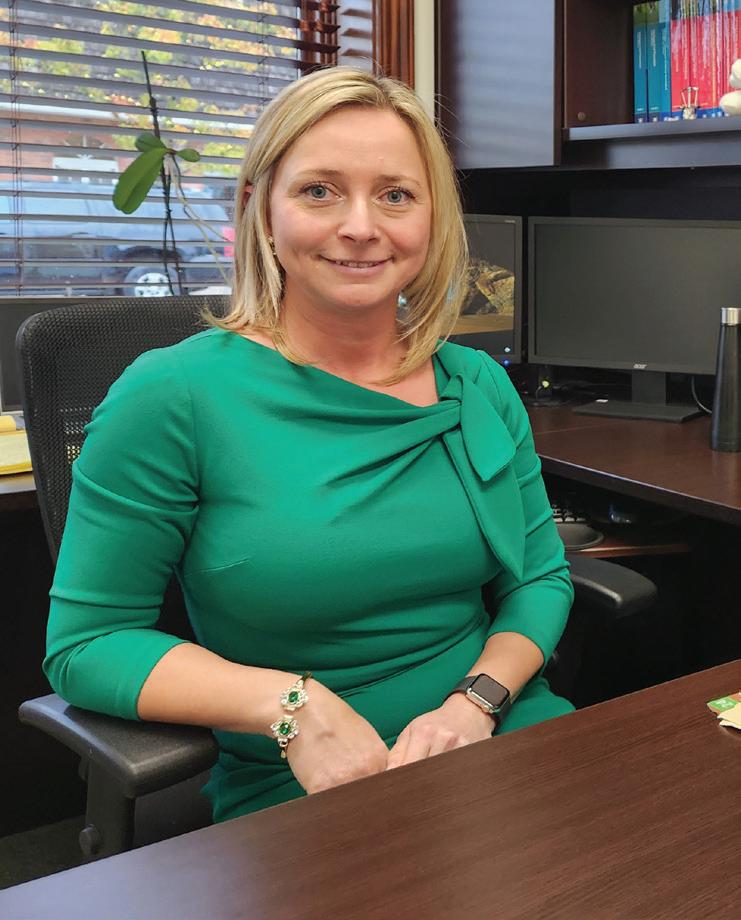
here, so now we don’t have to travel and charge clients for travel. And the parties can have witnesses from all over the state without the need for travel.”
Schmeltzer recalls 2019, during which she was balancing a “very litigious” divorce case in Sault Ste. Marie with another in Grand Haven and a custody case in St. Ignace.
“I want to say I put more than 30,000 miles on my car that year,” she said. “And that’s changed so much, because we don’t have to travel as much.”
Kester’s firm offers something called collaborative divorce, which she describes






as “divorce light.” It’s a legal process where a couple works together with the help of lawyers, therapists and other professionals to negotiate a divorce settlement without going to court. It’s an alternative to litigation that can be less expensive and stressful than a traditional divorce.
“It’s so much easier, but it’s only appropriate in certain cases,” she said. “And generally, it’s more affordable, but you can only go as fast as the slowest person. The traditional court system has a way of keeping cases moving.”
Kester’s firm also can get involved on a “limited scope” basis at great savings to the client. This is where the firm helps prepare the required documents, but doesn’t represent the client in court.
There’s no shortage of divorce attorneys in town. Those interviewed for this story use a mix of traditional marketing and social media to stand out, along with a heavy dose of referrals from other attorneys or former clients.
Schmeltzer, on the younger side of the local attorney pool, takes pride in positioning herself as different from the crowd. Her branding reflects that, and it’s resonated with clients.
“I got the advice a long time ago to not try to compete with the more (established)
attorneys, the green carpet, mahogany desk crowd, because that’s not who you are,” she said. “Focus on what you do have to offer, which is a good handle on technology, great energy and knowledge.”
Attorneys who handle divorces take pride in helping clients through what is almost always one of the most difficult times in their lives.
“These people are under a lot of stress, and they’re very emotional at times. It’s very taxing for the parties involved, both financially and emotionally. There are kids involved, their finances and standard of life may not continue,” Pop said.
“They’re not at their best and you just basically have to understand that and listen to them. That’s very important. People just want to be heard sometimes.”
Pop says she enjoys the intellectual challenge of divorce proceedings. Every case is completely different, and most require a level of creativity to come up with compromises that will satisfy both parties. Ultimately, she finds it deeply rewarding to set her clients up for long-term success.
“Generally speaking, people who get divorced are not happy, and even in the end, they may not be happy,” she said. “But it has a huge impact on their lives and on their children’s lives, and making


“There’s just no greater reward than really being able to help people. You can’t rescue people. They own their lives. But you can help reframe things, help them believe in themselves and show them that things are going to be all right.”
– Shelley Kester, President, Wilson Kester
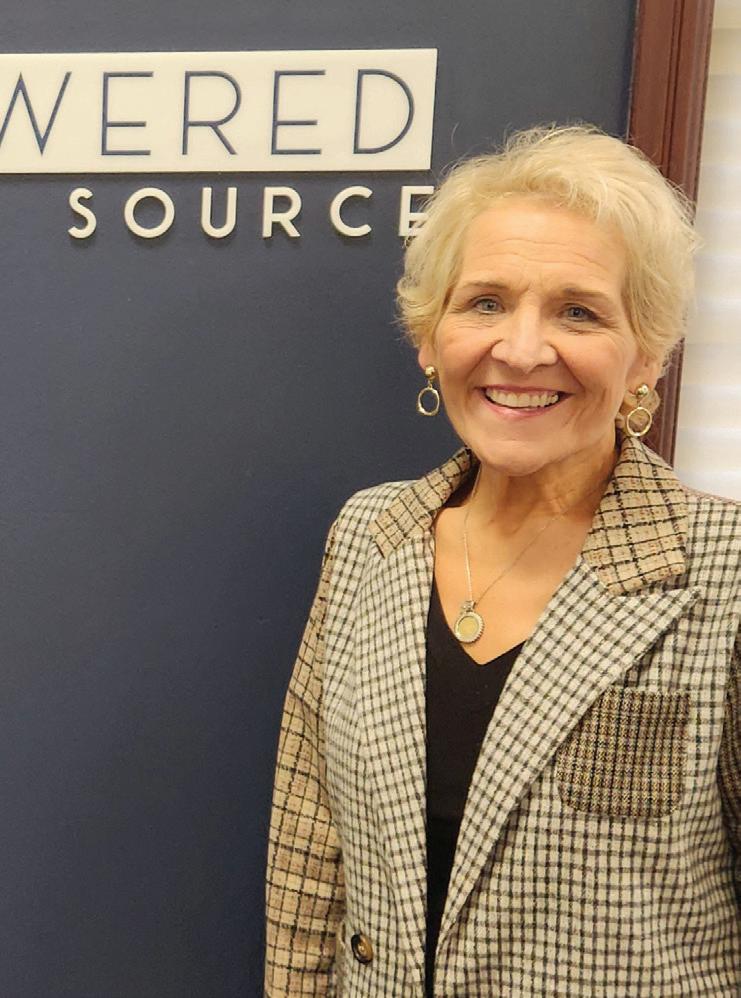
sure that you did everything you could for them so that they are perfectly situated for what’s coming after is very important.”
Divorce and family law in general help get people to better places in their lives, Kester said, and being by their side during that process is an honor.
“There’s just no greater reward than really being able to help people,” she said. “You can’t rescue people. They own their lives. But you can help reframe things, help them believe in themselves and show them that things are going to be all right.”
Kester, Schmeltzer and Pop also all
speak of the importance of being forthright with clients, especially as emotions are already high.
“I think an honest and direct relationship is important to make sure that you can trust each other,” Pop said. “You have to set realistic expectations and you can’t over-promise.”
Kester agrees.
“We’re very focused on helping our clients achieve their goal,” she said. “But I think I’ve been successful because people trust me. I don’t lie to them. I tell them how it is.”



By Josh Traeger, columnist
Picture a framed dollar bill, a quintessentially American symbol of small business success. You may envision it hanging slightly crooked on the wall at your local barber. Or maybe it’s gathering dust behind the bar at your favorite watering hole. Perhaps you see it still at your beloved bagel shop when you swing by for your Saturday morning order.
To me, that memorialized note means something. In a world in which the majority of small businesses fail, it means that this one has succeeded. They’ve created a product, found a market, and engineered a system that delivers value to customers while creating opportunity for employees.
But the choice to frame the bill, and hang it proudly, means more. It shows that the business is thankful for those that have supported it along the way. It’s a memorial of appreciation for the ones that helped it succeed. It is an outward projection of three words that are at the core of my values, passed on to me through Wake Forest’s former basketball coach, the late Skip Prosser: “Never delay gratitude.”
Truer words could not have been spoken, and they’re particularly applicable to your growing business. Gratitude is more than just a polite gesture; it’s a powerful business strategy. When business leaders actively express gratitude, they foster a positive work environment, build stronger relationships with clients and partners, and create a more resilient company culture. This culture of appreciation can also play a crucial role in solving problems and addressing legal issues that commonly arise in the small business landscape. Here’s why:
Generating more business through gratitude
When customers feel appreciated, they are more likely to become repeat clients and advocates for your brand. Simple acts of gratitude, such as recognizing a customer’s contribution, sending thank-you notes after a big contract, or offering loyalty discounts for those that keep coming back, can significantly enhance customer satisfaction and retention. These actions

‘NEVER
The power of appreciation in business
build trust and loyalty, which are essential for long-term business growth.
A loyal customer base not only ensures steady revenue but also serves as a buffer against potential legal disputes. Satisfied customers are less likely to lodge complaints or pursue litigation, as their positive experiences foster goodwill and patience in resolving any issues that may arise.
Decrease employee issues with a grateful workplace
Employees are the backbone of any small business, and their satisfaction directly impacts productivity and stability. A workplace culture that prioritizes gratitude can dramatically reduce common employee-related legal issues, such as discrimination claims, overtime disputes, and working condition complaints. When employees feel valued and appreciated, they are more engaged and motivated. Regularly acknowledging employees’ hard work and contributions can lead to a more harmonious work environment, reducing the likelihood of disputes escalating into legal matters. Furthermore, a culture of gratitude encourages open communication, allowing for the early identification and resolution of potential issues before they necessitate legal intervention.
How appreciation reduces legal exposure
Gratitude can also play a pivotal role in reducing your business’s exposure to legal
risks and costly litigation. Consider these common areas of business dispute:
• Contracts: When negotiating contracts, expressing appreciation can foster goodwill and mutual respect, making parties more amenable to fair terms and amicable dispute resolution. A grateful attitude can help maintain positive relationships even when disagreements arise, reducing the likelihood of contract disputes escalating to litigation.
• Trademarks and intellectual property: Protecting your brand is essential, but it often involves complex legal processes. Showing gratitude to partners, employees, and even competitors can lead to collaborative efforts rather than adversarial ones.
For example, a competitor might be more willing to negotiate a trademark dispute amicably if they feel respected and appreciated in your market, rather than resorting to costly and time-consuming legal battles with both parties fighting from opposing corners.
• General Compliance: A grateful leader sets a tone of respect and diligence that permeates the organization. Employees are more likely to adhere to legal and regulatory requirements when they feel valued and part of a positive culture. This compliance reduces the risk of violations that could lead to fines, penalties, or lawsuits.
Creating a culture of gratitude starts at the top. As a business leader, you should regularly express your appreciation to
employees, customers, and partners. Implement programs to recognize and reward employees for their hard work and achievements. This can include employee of the month awards, shoutouts in meetings, or simple thank-you notes. Show your customers they matter with loyalty programs, personalized messages of appreciation, and special offers. Maintain strong relationships with suppliers and partners by acknowledging their contributions and ensuring mutually beneficial agreements. Finally, incorporate gratitude practices into your leadership training programs, teaching managers to express appreciation genuinely and frequently.
If you come by our True North Legal Group offices, I can show you the framed dollar bill that we have on the wall. And I’ll never forget the day that first small business owner trusted us to be their counsel and supported our growing business.
We are grateful for them, and for this community, every day. And through the power of the words of a former college basketball coach, our business developed a core value – to express our appreciation openly.
I hope you’ll join us in displaying your gratitude without delay.
Josh Traeger is the founding attorney of True North Legal Group, a community-centered law practice based in Traverse City. He can be reached at (231) 800-8654 or josh@truenorthlegalgroup.com. Learn more about True North Legal Group at www.truenorthlegalgroup.com


By Andi Dolan, columnist
On January 1, 53 million Medicare beneficiaries will begin to experience the new $2,000 maximum for medications dispensed at pharmacies.
Massive overhauls to Medicare’s prescription drug program via the enacted 2022 Inflation Reduction Act (IRA) continues to unfold with limited visibility for stakeholders navigating this uncharted territory.
The Good: The intention behind the act was to reduce drug spending by the federal government and lower prescription drug costs for the Medicare consumer. Beginning in 2023, insulin purchased through Advantage or stand-alone D plans cannot cost more than $35 for a monthly supply.
Currently, vaccines recommended by the Advisory Committee on Immunization Practices and administered under the benefit of Part D do not have cost-sharing requirements (including shingles vaccine).
As of June 2024, three million Medicare enrollees have benefited from the expansion of low-income subsidies (LIS). With incomes less than 150% of poverty ($22,590 single/ $30,660 family), the eligible receive full LIS versus the partial benefits of years past. This now means no Rx premiums, no Rx deductibles and low-to-no co-payments for prescriptions within the new income corridor.
Beginning in 2025, $2,000 will be the maximum that any enrolled beneficiary will spend for their prescriptions – substantial savings for Part D enrollees using costly brand-name drugs! Once the deductible phase of $590 has been met, Rx claims will accumulate by way of tiered co-payments and track towards the new annual maximum ($590 + $1,410 = $2,000).
The Not-so-Good: Good intentions yield unruly consequences. The act has granted the federal Health and Human Services agency the power to negotiate drug prices directly with their maker.
In 2026, 10 specific drugs under Part D without generic or biosimilar competitors have been targeted: Eliquis, Jardiance, Xarelto, Januvia, Farxiga, Entresto, Enbrel, Imbruvica, Stelara and NovoLog/ Fiasp. Eight of these medications have

already had price increases in 2024.
Mounting pressures will continue to erupt at the pharmacy as affected consumers meet the pharmacist and the crew behind the counter. The National Community Pharmacists Association revealed in a survey that “more than 90% of independent pharmacists may not sell drugs for which the Part D program is trying to negotiate lower prices” as reimbursements from Pharmacy Benefit Managers (PBMs) are slowing.
Insurers, by way of PBMs, will also continue to steer the masses away from using expensive brand-named medications (as seen on TV) to less costly generic substitutions and treatments, if available. Prior authorizations, step therapy and strict quantity limits will continue to rise.
Rapid changes to a drug’s tier placement may become commonplace. Each quarter a medication has the possibility to jump to a new tier or copay level. With all Rx roads leading to $2,000, consumers may end up spending the max “sooner” rather than later.
Furthermore, Advantage plans that
have Part D “built in” have shifted their deck. In early 2024, Cigna sold its Medicare business to Health Care Service Corp (HCSC) for $3.7 billion. Other major insurers are feeling the pressure such as Humana’s exit in 13 markets. Likewise, stand-alone prescription plans are at an all-time low since 2006. Choices have been consolidated to less than 15 per state - included in the 2025 lineup, “no premium” drug plans.
In 2025, there will be an option for a beneficiary to pay for their medications in monthly installments, known as “smoothing.” This Medicare Prescription Payment Plan, through which beneficiaries’ Part D maximum can be “smoothed” over the course of a year, means a no-premium plan now becomes $2,000/12 = $166.67 per month.
The Ugly: Price tag.
Per Kaiser Family Foundation, “the Congressional Budget Office (CBO) estimated that spending on Part D benefits would total $137 billion in 2025, representing 15% of total Medicare outlays.” Furthermore, the website says, “based on
actual bid data submitted by Part D plans for coverage in 2025, CBO estimates higher federal spending on Part D of between $10 billion and $20 billion relative to its initial projections.”
The IRA impact within the prescription drug landscape will reach far and wide this next year. Changes to some of its major components will most likely occur within the first 100 days of the new administration ... yet this may not be felt until 2026.
Being prepared is the best medicine. Seek unbiased guidance and understand where potential benefits may deflate, where liabilities may shift and how that may affect your circumstances and future care. Read the fine print. Do it often.
The Wise: Realize that prescriptions may be harder to swallow in the days ahead.
Andi Dolan is the owner of Traverse Benefits, a local independent insurance agency advocating and providing health, life and disability solutions for employers, individuals and Medicare beneficiaries across northern Michigan.

The estate – or “death tax” – is a tax on your right to transfer property at your death.
After inventorying the value of your gross estate, amounts exceeding applicable thresholds require an estate tax return filing and are subject to estate tax. Taxable estates can quickly reach a top marginal tax rate of 40%.
Estate planning provides essential tools to identify opportunities to reduce taxes upon death and ensure more of your estate transfers to your intended beneficiaries.
First implemented in 1916, the estate tax has undergone significant legislative changes (including temporary repeal), changes to the exclusion amount and tax rates and other provisions. The Tax Cuts and Jobs Act (TCJA) of 2017 introduced many changes to the U.S. tax code, including doubling the amount of the estate tax exemption. The TCJA substantially reduced the number of estates subject to estate tax.
However, these tax changes were temporary, with many provisions expiring at the end of 2025 without further legislative action. Not planning for these changes could result in significant tax liabilities, making reviewing and updating your estate plan crucial.
In 2024, the gift and estate tax exemption is a combined exemption currently at $13.61 million per person or $27.22 million for married couples. When the TCJA expires at the end of 2025, the exemption will decrease to approximately $7 million for a single person or $14 million for a married couple.
While estate planning is essential for everyone, those with estates exceeding these reduced amounts should review their estate plan to evaluate strategies for taking advantage of the higher exemption amount under current law.
Many taxpayers would be exempt from federal estate taxes even at the reduced amounts. However, those with significant retirement or investment assets, appreciated real estate, life insurance policies and other assets may owe estate taxes if the current law were to sunset. Various strategies exist for limiting or reducing exposure to estate taxes. These could include using trusts, gifting, discounting strategies or donating assets to qualifying charities.

Trusts safeguard and manage assets and provide for a smooth transfer of assets to heirs. In addition to probate avoidance and asset protection, certain trusts may reduce the taxable estate while retaining options to provide for the grantor, their spouse and heirs. You may establish trusts to meet varying objectives and individual needs. Trusts can help manage asset appreciation, life insurance benefits, gifts or charitable donations. While these trusts may include some restrictions and loss of control, they provide valuable tools to remove assets from an estate and reduce the overall estate tax liability.
One of the more straightforward ways to reduce a taxable estate is to distribute assets while living. In 2024, single persons can gift up to $18,000 to any number of individuals without filing a gift tax return or using their gift and estate tax exemption. Married couples can gift double these amounts.
Making larger gifts earlier takes advantage of the higher exemption amount under current law, reduces the taxable estate, and keeps future appreciation and earnings on these assets with beneficiaries.
While you can gift various asset types, you should discuss gifts other than cash with your tax advisor to ensure you and your beneficiaries get the best tax result.
Not planning for these changes could result in significant tax liabilities, making reviewing and updating your estate plan crucial.
Assets left to qualifying charities as part of an estate plan or contributions made during life are another opportunity to reduce a taxable estate without utilizing any gift or estate tax exemption. Donations during life may also provide valuable income tax deductions. Various planning opportunities exist for charita-
ble contributions and charitable trusts, which can maximize income tax deductions during life while also reducing a taxable estate.
Through proactive and timely planning, various tools and opportunities exist to reduce estate tax exposure and help ensure a larger share of assets gets transferred to intended beneficiaries. With the presidential and senatorial election results now in, this bodes well for a potential extension of the current law. However, there’s no certainty and it could be delayed to the last hour. Early planning is crucial to ensure the successful implementation of your estate plan in either case to take advantage of the current higher estate tax exemption as needed.
Estate, trust and gift planning is a complex area with future law changes unknown. Consult with your tax and legal advisors to discuss your specific situation and explore strategies for your goals and needs.
Jonathan P. Benjamin, CPA, is a tax partner at Dennis, Gartland & Niergarth. He focuses on planning and tax services for business and individual clients. He is a member of the American Institute of Certified Public Accountants and Michigan Association of Certified Public Accountants.





By Rick Haglund
Bank deposits in Grand Traverse County have crept to their highest level since 2022, marking a slow economic recovery from the COVID pandemic and a boost from a new bank that entered the market last year.
Deposits rose from $3,559,438,000 on June 30, 2023 to $3,680,226,000 on the same day this year, a 3.4% increase, according to the Federal Deposit Insurance Corp.’s annual deposit market share report.






But those deposits were still $80,308,000 below record deposits of $3,760,534,000 in 2021. Deposits that year jumped 21% from 2020 due to billions of dollars in COVID relief funds doled out by the federal government in its attempt to revive an economy that had ground to a halt during the pandemic.
Financial institutions reported a mixed bag of results this year as high interest rates and inflation, while easing, are still hitting consumers’ pocketbooks. That has prompted many people to tap savings to support living costs. Plus, some institutions have become less aggressive in seeking deposits as federal stimulus money dried up.
Among those is 4Front Credit Union in Traverse City, which had deposits jump 10% last year as it offered high-interest-rate certificates of deposits to capture extra cash consumers were carrying. But deposits are down slightly this year, says Andy Kemp, 4Front’s president and CEO, as the credit union cut back on its aggressive CD rates.
“This year we have purposely let the ‘hot money’ roll off and are focusing more on core deposits,” he said.
Karen Browne, president and CEO of TBA Credit Union in Traverse City, says continued softness in the economy can be seen through some loan categories. The average car loan at her credit union, for example, has fallen from $26,000 in 2022 to just under $23,000 this year.

“That’s indicative of members not able to afford more expensive vehicles because payments are higher with higher interest rates,” Browne said.
Some bankers say uncertain market conditions benefit banks because people see them as safe places to park their cash.
“For us, deposit growth has been slow, but steady bank-wide,” said Doug Zernow, spokesman for State Savings Bank. “Whenever there is volatility in the economy, it is not uncommon to see money coming back to banks from the

“significant” deposit growth since June 30, mainly due to a second full-service office it opened in August in Garfield Township.
He and other executives at small community banks say their personal service and local decision making give them an advantage over larger banks that may not be as nimble in approving loan applications and providing other banking services.
But those big banks continue to dominate the Grand Traverse banking market. Huntington Bank, Fifth Third Bank and Chase Bank held a combined 71.4% of
“We are running a very high-service, office-light model. The future is not teller lines and drive-throughs. Online and mobile banking are the focus, with customer service, support and relationship management being met by a local team.”
– Scot Zimmerman, Community President, Mercantile Bank
investment market.”
Frankfort-based State Savings Bank’s deposits in the county rose from $49 million on June 30, 2023 to $55.7 million this year. The bank has a tiny share of the Grand Traverse deposit market – just 1.51% – but it rose from 11th largest last year to ninth in market share among banks operating in the county.
Zernow says State Savings Bank has seen




Fifth Third’s market executive for northern Michigan, cites the bank’s longevity in Traverse City as a lure to consumers and businesses seeking deposit safety in an uncertain economy.
The local Fifth Third bank traces its history to the former Traverse City State Bank, which was founded in 1904 at the corner of Front and Union streets, where Fifth Third still resides.
“During periods of uncertainty, both consumers and businesses seek stability,” she said.
Experts say what big banks may lack in personal service can be offset by their greater ability to offer a wide array of online services as the banking industry shifts away from brick-and-mortar offices. Big banks also can better afford to invest in the digital technologies required to offer those services, as well as cybersecurity protections.
all bank deposits in the county as of June 30. Huntington’s $1.4 billion in deposits were more than double those of second-place Fifth Third, which held $678 million in deposits. Third-place Chase had $550 million in deposits.
Cincinnati-based Fifth Third saw its market share rise slightly, from 17.72% in 2023 to 18.43% this year, after dipping between 2022 and 2023. Autumn Gillow,
Still, some new smaller entrants are betting on being able to effectively compete with the super-regional banks such as Fifth Third in the Grand Traverse market.
Grand Rapids-based Mercantile Bank opened an office in Traverse City in September of 2023. Headed by veteran local banker Scot Zimmerman, the bank had just $11.5 million in deposits locally on June 30 and a miniscule market share of 0.31%.
But he says deposits, all of which were generated locally, grew to $15.7 million

as of the end of October. Zimmerman adds he expects to continue that growth through a combination of personal service and online offerings.
“We are running a very high-service, office-light model,” he said. “The future is not teller lines and drive-throughs. Online and mobile banking are the focus, with customer service, support and
relationship management being met by a local team.”
There are 12 banks serving Grand Traverse County with the likelihood of a 13th opening soon. That would be the largest number of banks operating in the county in at least 20 years.
Gregg Bigger last year established GTSB Financial Inc., a bank holding















company that won approval in October to acquire First State Bank of Decatur, one of Michigan’s smallest banks. Pending regulatory approval, GTSB plans to open Grand Traverse State Bank, a full-service bank in downtown Traverse City in April and another bank in metro Detroit by August. Despite all the competition from banks and credit unions in Traverse City, Bigger
said in a news release that he thinks there’s still room for a new bank to capture deposits and serve borrowers.
“GTSB has been designed from the ground up to serve as a responsive and valuable resource for the families, businesses, and stakeholders who make the Grand Traverse region such a remarkable place to live and work,” he said.


Crisis Intervention Services
• 24/7 Crisis Line 833-295-0616
• Crisis Welcoming Center, 105 Hall Street, Traverse City, 8A-5P, M-F
• Mobile Crisis Teams for Adults and Children
• Coming later in 2024: Grand Traverse Center for Mental Wellness
• Psychiatry
• Therapy
• Counseling
• Case Management
• Autism Applied Behavioral Analysis
• Specialized Residential Services
• Long-term Services and Support
• Traverse House & Club Cadillac Clubhouses


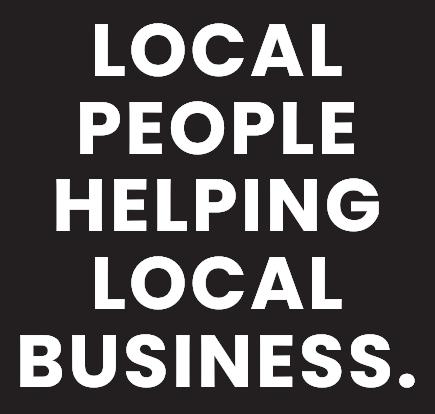



At Munson, expert hands are aided by leading-edge technology to uncover and treat what ails you. But the core of our commitment comes from within. It’s the call to serve. With listening ears and determined hearts. Committed to answers. To your healing. And to you.
Learn more at: munsonhealthcare.org/commitment




When the daily news is filled with discussions about inflation, interest rates, market volatility, and endless other angst-producing events, how you react could make a difference in your financial outcomes. These tips may help you sort through the noise and create an action plan that fits your situation.
Transitioning your family business to your heirs may sound simple enough, but in fact, doing it successfully can prove difficult. To help improve your transition’s chances for success, consider family business governance.
This is a system of correlated tools and actions to support the next generation with controlling, owning, and operating the business. It also puts in place a framework that contains business protocols, describes how future ownership changes occur, and establishes a precedent for making business decisions.
1. Evaluate
Frequently used tools
The first step is to evaluate. Do you have a current retirement income plan that you have been following? If your plan is documented, it is likely that it includes how much cash flow you need to meet your day-to-day expenses as well as for discretionary spending. Pull out your plan and take a look to determine where adjustments might be applied.
There are several tools that can be employed as part of a family business governance system, including:
A buy-sell agreement is a legally binding contract that stipulates how an owner’s share of a business may be reassigned if triggering events occur, the price that will be paid, and the payment structure.
If you do not have a plan or it has not been updated to reflect your current circumstances, document your assets, income sources, expenses, and debt. Gathering all the information in one place helps clearly define your total money picture. In the process, you may uncover expenditures that can be reduced or eliminated. A few adjustments may be enough to reduce the pressure on your income flow.
A family employment policy document can be kept within the family for private use or incorporated into the business’s human resource documentation. It sets expectations for heirs, spouses, and extended family members about such issues as how they can obtain employment in the business, the requirements to attain key positions, the compensation standards to be used, and incentive language for family members.
2. Retain or adjust
If your plan is addressing your current needs, it can be reassuring to confirm that your plan is working as you had expected.
A distribution or dividend policy is key in setting expectations with family members regarding what distributions they should expect to receive from the business. Business owners must balance the need for cash to maintain or grow the business with the desire to receive distributions.
If your income needs no longer match your income plan, depending on your circumstances, there are actions you may want to consider to get your plan on track. These may include:
• Altering your withdrawal strategy to change the amount in taxes you pay on your retirement income to give you greater spending power
• Reallocating your assets or temporarily reducing withdrawal amounts to address any concerns about drawing down your investments in a down market
A professional board of directors is a governing body that helps oversee the business and makes major decisions. A board generally comprises three, five, or seven professionals from various industries that have the subject matter expertise to assist the company strategically.
• Including inflation-indexed investments or other income-generating strategies in your portfolio
A family board or council is a group within the family — or may include the entire family — that comes together to make decisions about the business on the family’s behalf.
A company mission statement can be valuable to your employees and your family as it addresses the business’s purpose and vision and can help guide future company leaders. Your estate plan can address ownership, control, distributions, and several other factors.
• Adding an annuity with income protection, which may help ensure an income stream that lasts for life, even in the event of poor market performance. A variety of annuities, such as variable annuities, registered index-linked annuities (RILAs), fixed indexed annuities, and immediate annuities, may provide income protection. One of these products may be appropriate for a portion of your assets, depending on your specific needs and risk tolerance.
The business’s governing documents should be reviewed at the same time the family business governance system and tools are put in place. Revisions to these documents or corporate resolutions stored in the corporate minutes may be needed to align these documents with the company’s governance system.
Your advisor can help you explore how alternatives such as these may fit into your strategy. Indeed, both your tax advisor and financial advisor can be helpful partners in assessing your situation.
Helping ensure a successful transition
3. Periodically revisit and adjust again, if needed
Regular reviews of your income flow and income strategy are helpful to identify if changes are needed in your strategy or to confirm that things are working as planned.
Transitioning the family business to the next generation is much more than transitioning shares. A well-thought-out and documented plan that addresses ownership, control, and operations helps build a strong governance system for your business. This system, combined with communication with the next generation, can be key to helping ensure your transition’s success.
These are just a few examples of changes that could help your retirement income deliver on your strategy. Contact your financial advisor and legal and tax advisors to review your specific situation and help address your changing needs.
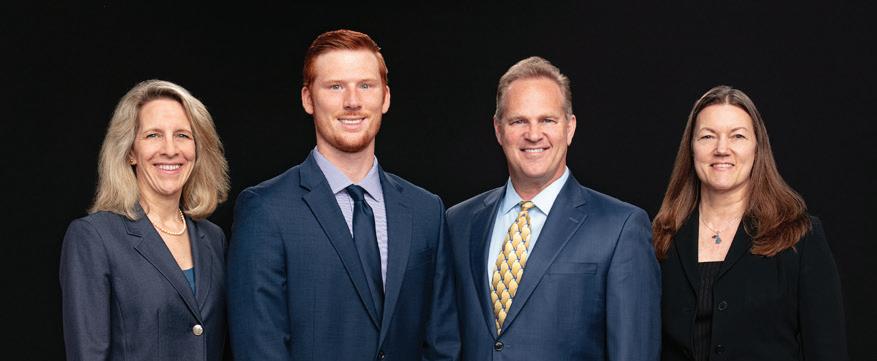
JULIAN | BLACK Wealth Management Group of Wells Fargo Advisors



By Rebecca Teahen, columnist
You made your list. You checked it twice. All your kids are nice, of course!
As we head into the holiday season, your to-do list is likely getting longer and longer. Let’s think about some ways that we can create some win-wins for your financial plans and your family holiday plans.
Maybe the little kids don’t really need more toys, and it can be challenging to find the “right” item for adult children. Besides, you’d rather not fight the crowds to go find these items, right?
Instead, what if you could help your children or grandchildren go to college to pursue their dreams?
What if you could give your adult kids some financial breathing room, or some extra room to fund a family vacation?
We all know that inflation has put extreme pressure on everyday living expenses since the pandemic. When you consider big-ticket items like a college education, it can feel even worse.
(Sidebar: If you’re in the midst of college planning, it will serve you well to pursue all your college options. Apply to the schools you’re interested in and find out what kind of financial aid package they’ll offer. Often, the “sticker price” is not the price you’ll end up paying.)
While college degree requirements are declining in job postings (according to hiringlab.com, roughly half of all job postings on Indeed.com this year did not mention a college degree), I’m still a firm believer that a college education is well worth the investment. Even if half or more online postings don’t require the degree, having one will certainly expand the opportunities available to you and your children or grandchildren.
This year, you could gift up to $18,000 to other individuals tax-free. A married couple can each gift that amount, or up to $36,000 together. BANKING &
So, how can we take the need for a great holiday gift, combine it with the need for higher education, mix in a lack of enthusiasm for shopping, and create something amazing?
It’s the 529!
Very simply, a 529 education savings plan is a tax-deferred savings vehicle for educational expenses. While there are some “strings” attached, these are fairly flexible tools which can be used for K-12 and post-secondary education.
An adult custodian holds the account,

Tuck 529 college funding plans, charitable giving or cash in their stockings this year
typically for a minor beneficiary. If the original beneficiary doesn’t go to college, or doesn’t use all the funds, you can redirect the funds to a different beneficiary. If you still don’t end up using all the funds, and it’s been at least 15 years since the account opened, it can be transferred into a Roth IRA (subject to limitations, of course).
While the use of this gift may be delayed, the impact will certainly be felt immediately as your family feels the weight of paying for college lift, even a little bit, and as the beneficiaries start to imagine their future filled with opportunity.
Now, what about adult children?
It turns out, even with a great college education, the cost of living – and especially housing – is still out of reach for many.
According to Yahoo Finance, the average home price in the U.S. increased by 131% between 2007 and late 2023. And we all know it’s not just housing. All the things to keep your home running, family fed and maybe have a little fun along the way…they all cost money, and significantly more now than five years ago. If you are a more mature reader and have the means to share wealth with your family, consider making a gift of cash or other assets to your adult children. Again, this has the advantage of portability, no shopping required and could literally change the lives of your loved ones. If you’d already intended to gift your wealth to your children and grandchil-
dren, perhaps after your lifetime, imagine the joy of seeing them benefit from it now.
This year, you could gift up to $18,000 to other individuals tax-free. A married couple can each gift that amount, or up to $36,000 together. In fact, you could even gift more
than that and never have to pay taxes on it, as long as you don’t exceed your lifetime exclusion amount, which for 2024 is $13.61 million per person.
(Sidebar: It’s a good idea to talk to a financial advisor to determine the best ways to make family or charitable gifts, consistent with your financial plan and tax strategies.)
We can’t talk about the holiday season without mentioning charitable gifts. Char-
itable gifts in honor of a loved one can be thoughtful way to show how much you care (plus they don’t involve gift wrapping!) Most nonprofits will even send an acknowledgment to your loved one when you make the donation in their name.
Or, consider gifting a membership to a local nonprofit organization. We have several great options here, including the Dennos Museum Center, Botanic Garden at Historic Barns Park or, for the budding entrepreneur, a membership with 20 Fathoms or the Economic Club of Traverse City.
Choosing to make a gift like this can be a meaningful way to further align your financial decisions with your family values. Making these gifts during the holidays can create a fabulous opening to discuss your family’s wealth, and how you hope the next generation might steward these assets. During this season, there will be countless competing priorities. Make sure you find time to slow down and reflect on what you really want to accomplish for yourself and your family this season and for the future.
Rebecca Teahen, CIMA® is a financial advisor with Baird Incorporated, located in Traverse City and serving clients nationwide. Send a note to rteahen@rwbaird.com to join her email list. Baird does not provide tax or legal advice. Please consult your legal or tax professional for specific information.
PRESENTED BY KEEN

Traverse City’s iconic Cherry Republic partners with KEEN for a sustainable future with an all -electric HVAC system.
SOLUTIONS
✓ Temperature Control
✓ Office Comfort
✓ Energy Recovery Ventilators
✓ Clean Air with Di-Polar Ionization
✓ Reduce Energy Costs

Great company to work with. We added a new HVAC system to our workplace, the air improvements are amazing. The employees notice a big difference especially in an older building. Highly recommend Keen!
Dawn Gildersleeve





The shift away from traditional gas systems significantly reduces the environmental impact.










By Kierstin Gunsberg
As temperatures drop across northern Michigan, Traverse City’s Hearth Sauna is heating up – literally. Inside, the temp hovers between a toasty 160 and 200 degrees.
These aren’t the dim, musty saunas of old gym lore. Instead, Hearth Sauna’s owner Nick Olson says it’s bright, invigorating and, most importantly, deep-cleaned twice a day to avoid the funk that makes most people cringe at the thought of hopping into one.
Since opening last fall, Hearth Sauna has hosted more than 1,000 sauna-seekers across its three locations, which include Mt. Holiday Ski Resort and Elev8, Olson’s fitness and rock-climbing business. Each 70-minute session alternates between the heat of the sauna and frigid outdoor ice plunge, a Nordic-inspired hot/cold routine that sauna advocates say improves cardiovascular health and sleep while lowering blood pressure.
For many of Hearth Sauna’s regulars, who range in age from their late teens to late 60s, the real appeal is the social experience. Instead of private-use saunas, guests relax in large, 10-seat communal spaces lined with western red cedar and heated by 450 pounds of wood-fired stones.
His inspiration to open a social sauna came from his own downtown TC backyard sauna where friends gather for long sessions and even business meetings.
“It just became this weird backyard community space for me,” he joked. “So the idea was simply to be able to offer that to more people.”
Hearth Sauna has gained traction with clients looking to invest in more experience-based outings, with the majority opting for memberships over the $35 single-session fee.
Meanwhile, Olson is still fine-tuning his marketing, pinpointing what resonates with his clientele. Something surprising he’s found is that many are turning to saunas as an alternative to northern Michigan’s bar scene.

“What people get at a bar, beyond the social and community aspect, is excitement. It elevates your heart rate,” he noted, adding that heat offers a similar effect, with most people reaching around 120-130 cardio beats per minute in saunas.
“(At that point) you actually feel pretty open and more vulnerable,” he said. “You get people sharing things that you wouldn’t share with somebody they’d maybe just met.”
Bringing sauna to the masses hasn’t been particularly easy. While day-to-day operating costs remain low, with staffing being the big gest ongoing expense, Olson has found that his business model is a tricky one because of zoning regulations. His first location in Grand Rapids got tangled in red tape. The problem, he explains, is that while the saunas are technically mobile, once they’re placed, he doesn’t plan to move them.

“You’re not a mobile thing like a food truck, but you’re also not a permanent structure,” Olson said. “So you can’t go through the normal building codes.”
As a result, that first Grand Rapids location closed after seven months, with a planned reopening imminent once the permits are finalized.
An Old Mission expansion slated for January has also been delayed because of ongoing zoning negotiations. Still, just as he encourages Hearth Sauna’s guests to use the experience as a chance to let go and reset, Olson is following his own advice as he looks towards the New Year.
“I’ve tried to kind of relax into the natural growth of the business,” he said.
20Fathoms sponsors this column. Designated by the Michigan Economic Development Corporation as the Small Business Support Hub for Northwest Michigan, 20Fathoms is a nonprofit organization providing critical services for the region’s entrepreneurs. It specializes in accelerating the growth of innovative and scalable startups. Learn more at 20Fathoms.org.
Confident your organization is secure? Frustrated with your current tech support? Leave your IT needs to the pros! You deserve a reliable, responsive IT partner. Discover how our proactive and robust solutions can secure and benefit your team.
















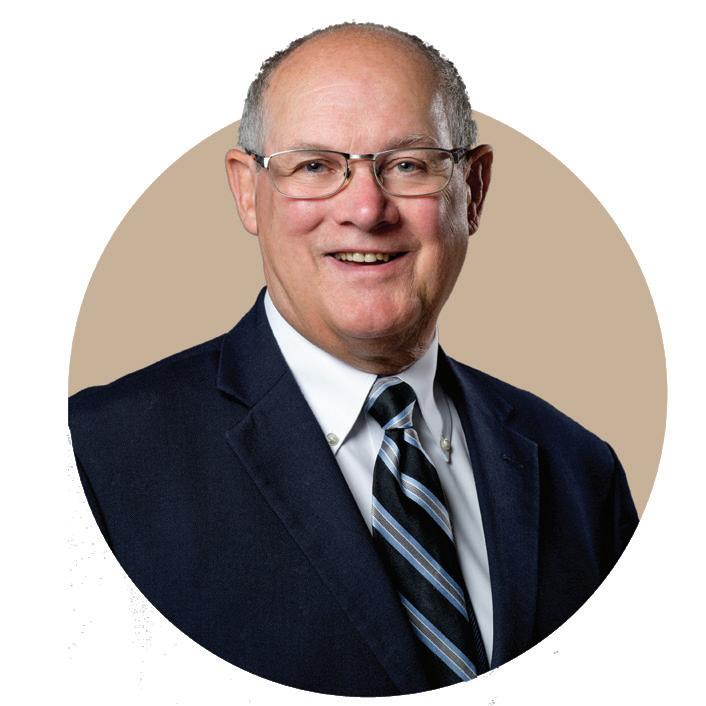
By Mike Nagy, columnist
“When are mortgage rates going to go down?”
That’s the one big question I’ve been getting all year long – and not just from clients and customers, but also from friends, family members, and acquaintances out in the world who know what I do for a living.
You might be asking that question, too, whether you’re in the market for a new house or wondering when you’ll be able refinance your home for a lower rate. And I expect I’ll hear even more versions of this question in the weeks and months to come, in the wake of a presidential election where inflation and high costs of living were clearly on a lot of voters’ minds. Unfortunately, asking the question is the easy part. Answering it is a lot more difficult.
First of all, it’s important to remember that a lot of what’s happening with loan interest rates right now is linked to efforts aimed at slowing inflation. Rates were at bargain-basement lows during the peak of the COVID-19 pandemic, because the Federal Reserve was trying to stimulate the economy. Largely, that stimulus worked! The economy revved up again, spending resumed, and employment levels rebounded with record speed.
I certainly saw the effect of that stimulus in my office. When we weren’t working furiously on pushing refinancing applications through the pipeline, we were hearing from would-be homebuyers who came to us for loan pre-approval but then struggled to navigate a local housing market suddenly rife with bidding wars and way-above-asking-price offers.
But one consequence of all that stimulus is the very inflation trend we’ve been riding out for more than three years now.
“Our findings suggest that fiscal stimulus boosted the consumption of goods without any noticeable impact on production, increasing excess demand pressures in good markets,” the Fed itself shared in an article published to its website in July 2022. “As a result, fiscal support contributed to price tensions.”
When inflation kicks into high gear, the Fed raises interest rates to slow down borrowing – and, by extension, cause

With interest rates dropping, could lower mortgage rates be far behind?
spending and buying to decelerate. The theory is that, if there’s less rampant spending, demand pressures will drop and prices will stop skyrocketing.
That strategy seems to be working, too. In a look at inflation data this past September, CNBC reported that “price pressures have eased substantially since their meteoric rise in 2021-22.”
From the Consumer Price Index to wholesale price measures, all metrics point to a significant slowdown of pandemic-era inflation.
That slowdown leads to a reasonable assumption that rates are finally going to go back down again, and recently, the Fed actually has been cutting interest rates. Indeed, just two days after American voters elected Donald Trump to be the next president, the Fed reduced interest rates by a quarter of a percent – the second reduction to happen in 2024.
Does that mean mortgage rates will also be dropping soon? Maybe, but there isn’t a straight-line cause-and-effect relationship between those two things.
What many Americans don’t understand is that mortgage rates aren’t actually tied to Federal Reserve lending rates, at least not directly. What tracks with these rate cuts is commercial lending, not mortgage lending. Instead, mortgage rates track with the bond market, and that market is less fickle – and less predictable – that the artificially controlled Fed rate.
Fed rate cuts certainly can influence what happens with mortgage rates. Mortgage rates typically go up and down alongside the yield on 10-year treasury bonds, and those bond yields can (and do) fall as investors anticipate or respond to Fed

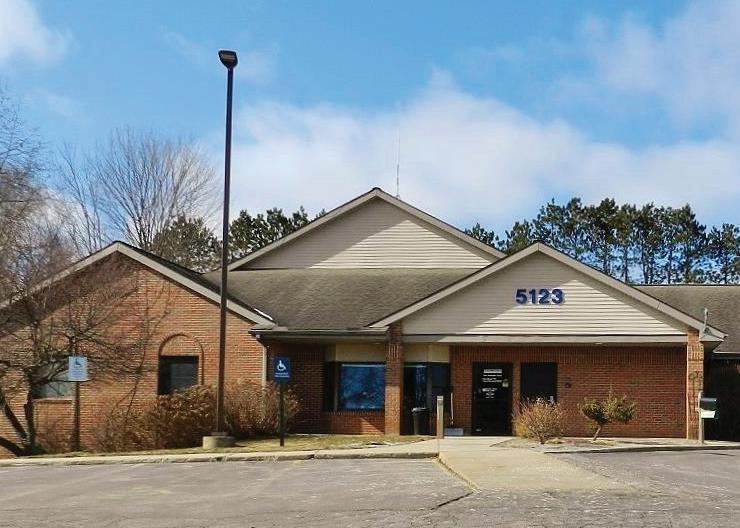
rate cuts. But those shifts aren’t automatic, and they don’t happen overnight. So, even though the Fed is currently dropping its rates, that doesn’t necessarily mean a lower mortgage rate is going to be available for you to refinance your home or buy a new house next month.
The Fed rate is also far from the only factor that affects bond price and yield. The bond market moves with the news on what’s going on in the Ukraine, for instance, or in the Middle East. It moves on what’s happened with the hurricane season in the southeastern United States this year. It certainly moves on fear, and what does a longterm investor fear more than inflation?
All these factors might help explain why mortgage rates remain high even as inflation slows and Fed rates drop, and they’re why it’s so hard to predict when we’ll see a noticeable decline.
Based on chatter in the finance world, and thanks to the Fed’s two recent rate cuts, if I had to guess, I’d say that mortgage rates are likely to drop within the next three to four months. But then again, three to four months is a long time in the world of rates, bonds and global affairs, and I could be singing a different tune by the time we get to New Year’s Day.
It’s times like these that I wish I had a crystal ball. For now, though, I’m feeling a little closer to a magic eight ball and its most famous answer: Ask again later!
Mike Nagy is vice president of mortgage lending at State Savings Bank in Traverse City. He has more than four decades of banking experience. State Savings Bank has been financing homes in northwestern Lower Michigan since 1901.





“Old Mission Windows prides itself on developing long-term relationships that are based on integrity and trust. The quality products and flexibility they provide is only surpassed by the service and follow-up my customers receive well after project completion.”
-Eric Darooge, President Eastmark Construction
Kolbe Windows & Doors leads the industry with innovative products that push the boundaries and defy the limits of function, performance and style. Contact Old
By Ross Boissoneau
Each year sees the passing of beloved community members, whose memory lingers on in the individuals and institutions they have touched. Read on to learn more about the hearts, hands and minds that have helped make northern Michigan a great place to be.
The co-founder of Hagerty grew up in Leelanau County and attended Michigan State University. As a student, she traveled by train to see the Spartans play in the 1956 Rose Bowl.
She married Frank Hagerty and settled in Traverse City, where they launched the worldwide classic car/boat insurance company in their home basement. She served as company CEO and brought all three of her children back to Traverse City to work in the family business.
Hagerty was active in several community organizations, including the Traverse City Human Relations Commission, the League of Women Voters, Central United Methodist Church, Central Day Care board of trustees, the Friendly Garden Club of Traverse City, the City Opera House board of directors, and the Traverse City State Bank board of directors.

Her efforts were recognized when she received the Athena Award from the local chapter of Zonta International. She never lost her love for taking scenic cruises in a vintage wooden boat and driving the back roads in a classic car, especially her favorite, a 1937 Packard.
The Traverse City native became well-known for his innovative building practices. After working for building supply and construction companies, Strickland opened his high-performance building consulting firm, Strickland, Ewing & Associates, dedicated to green building. He became recognized as one of the leading experts in the field in the state.
Strickland volunteered his services to Habitat for Humanity building program, the Home Builders Association of the Grand Traverse Area Green Build committee, the Northwest Michigan Sustainable Business Forum and the American Lung Association Health House project.

For the past several years he has been part of a team developing a zero-energy residential neighborhood. Strickland also served his passion by writing a monthly column about the various facets of building with the environment in mind, teaching classes, and leading workshops and conferences.


A Frankfort High graduate, Paul Luedtke earned his degree from Michigan Technological University before starting work at Luedtke Engineering Company in his hometown. He eventually became co-owner with his brother Kurt of the marine engineering and construction firm. He supported Frankfort High School sports boosters and was a member of Trinity Lutheran men’s group. He often served the church by working at fundraisers, preparing meals and luncheons.
Like his late brother and best friend Kurt, he served on the Frankfort City Council. He maintained other family traditions as well, including hunting and fishing, listening to music and attending concerts, attending Frankfort Panthers sporting events, and cheering on the Michigan State Spartans and the Green Bay Packers.

Ruth Blick moved to the United States from Canada in 1988 to marry Richard Blick. They moved to Traverse City in 1995 as a family of three with their son, Bryce Blick. Her mission in life was to help the less fortunate, and she worked at Goodwill for many years before moving on to the Salvation Army. She served as the director of community resource development there for the last 10 years.
Blick was remembered as a thoughtful and vivacious person who always made time for the things that mattered. She was especially visible during the holiday season when she could be found smiling and ringing bells for the Salvation Army all around town.



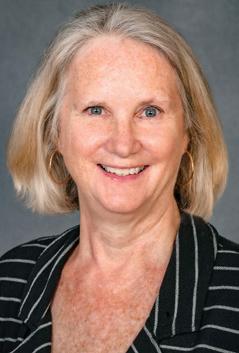
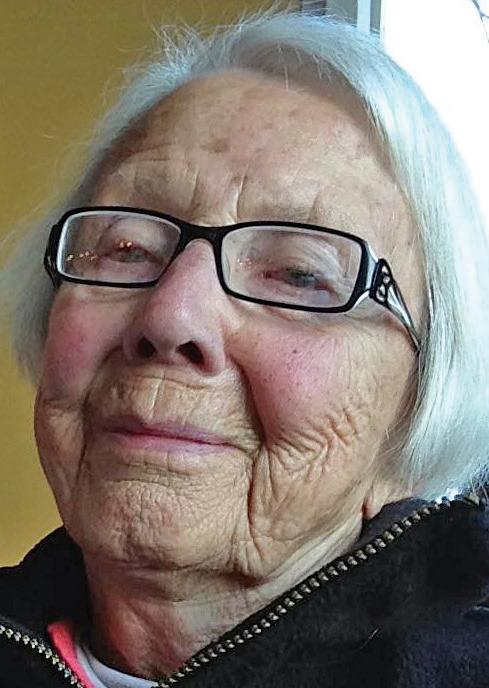
Longtime downtown business owner, teacher and advocate for the arts Marcia Bellinger grew up in Boyne City and taught high school English downstate before moving back north following the death of her first husband. She taught English at Pathfinder Upper School and Northwestern Michigan College before opening Belstone Gallery, named for her and her second husband, Irwin Stoner, in 1986.
Under her direction, the gallery became well-known throughout the region. Her support for the arts and her adopted hometown was demonstrated through service on the boards of the Traverse Area Arts Council, the Downtown Traverse City Association, the Old Town Playhouse, and the Dennos Museum Center. In recognition of her leadership, she received the 2003 Lyle DeYoung Award and the 2008 Athena Award. Bellinger served on the board and volunteered for the Women’s Resource Center and the Unitarian Universalist Congregation.

A scion of the longtime cherry-farming McManus family, George McManus served as Michigan state senator representing the 37th District from 19901994 and the 36th District from 1994-2002. He was a trustee of Northwestern Michigan College for 20 years, and a director of the college’s foundation. He earned both a bachelor’s and master’s degrees from Michigan State University and went on to work for MSU Extension Service, first as district marketing agent, then district horticultural agent, and finally county extension director, retiring after 26 years. He was appointed by Governor James Blanchard to the Michigan Agricultural Commission and served on the board of directors at Cherry Growers Inc. and several other institutions. McManus was an active member of Farm Bureau, the Traverse City Elks Club, the Ancient Order of Hibernians, and Rotary Club, where he served as president and chairman of Rotary Charities.















1 - Megan Bylsma has been named director of corporate and foundation relations for the Northwestern Michigan College Foundation in Traverse City. Bylsma maintains all corporate and foundation relationships for the Advancement and Community Engagement Division. She first joined the NMC Foundation in 2023 as a major gifts officer with more than 17 years of experience leading non-profit, higher education, and corporate environments.
2- John Lutchko has been named director of the Great Lakes Water Studies Institute (GLWSI) at Northwestern Michigan College in Traverse City, after serving in an interim role following former director Hans VanSumeren’s departure in July. Lutchko has been part of the NMC community for almost 15 years, first as a student in the Freshwater Studies program. He then served as GLWSI lab coordinator and manager, and has clocked more than 1,000 hours piloting and maintaining ROVs, captaining the R/V Northwestern, and presenting at national conferences on workforce training.
3 - Dan Good , supply chain manager at Copper Ridge Surger y Center in Traverse city, was recently honored with the Michigan Ambulatory Surgery Association (MASA) Leadership Award. Established in 2022, the MASA Leadership Award is a peer-nominated accolade bestowed on individuals whose outstanding contributions to MASA embody the association’s core values.

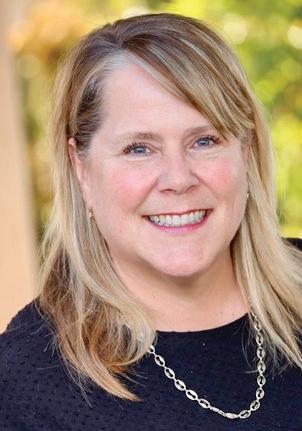

Munson Healthcare in Traverse City announces the following personnel news:
4 - Dallas Foley , nurse practitioner, has joined the neurosurgery team.
5 - Taylor Schuch, D.O. , has joined Elmwood Primary Care. Dr. Schuch has special interests in pediatrics, obesity medicine, and women’s health.
>> CONSTRUCTION & REAL ESTATE
6 - Mic hael Farese , project manager for Miller Davis in Traverse City, received the Builders Exchange of Northwest Michigan’s Rising Star award at the organization’s recent Awards of Excellence event. The honor celebrates a young professional in the early stages of his or her career who demonstrates exceptional potential in the construction industry. Farese’s first project with Miller Davis was overseeing Traverse City Area Public Schools’ new Montessori School.
7 - J.R. Quinones-Blehm has joined Traverse Real Estate in Traverse City. Quinones-Blehm is in his third year as a real estate agent, and also brings 36 years of experience as an interior designer to his new position.
>> OTHER
8 - Jim Becsey has joined The Homestead in Glen Arbor as manager of building and grounds. Becsey is responsible for the upkeep of resort-owned buildings and maintenance of the grounds, including the resort’s ski facilities. Most recently, he was vice president of facilities develop-




ment & operations at Washtenaw Community College.
9 - Jennifer Ewing of Human Resource Partners in Traverse City was recently awarded the Michigan Council of SHRM’s (Society for Human Resource Management) 2024 Lifetime Achievement Award during the Annual Conference and Exhibition. Ewing was nominated for this award by the Traverse Area Human Resources Association, where she has been a member since 1998.
10 - Michael Olm recently joined the mortgage lending team State Savings Bank in Traverse City, serving customers throughout the region. Olm brings four years of professional experience to his new position.
11 - Daniel Simmons has joined Black Star Farms as event sales and catering manager. Simmons brings a background in events and most recently worked with the beer, wine and spirits team at Meijer.
12 - Craig Wesley is the new executive director of 20Fathom s, the Traverse City-based startup incubator and coworking space. He succeeds former director Eric Roberts, who retired earlier this year. Wesley brings more than 25 years of business and executive experience to the organization, ranging from ground-floor startups to the public company C-suite. Most recently, Wesley served in consulting roles for local trulyfreehome.com and trulyfreemarket.com.
Please send Newsmakers by the 10th of the month to news@tcbusinessnews.com
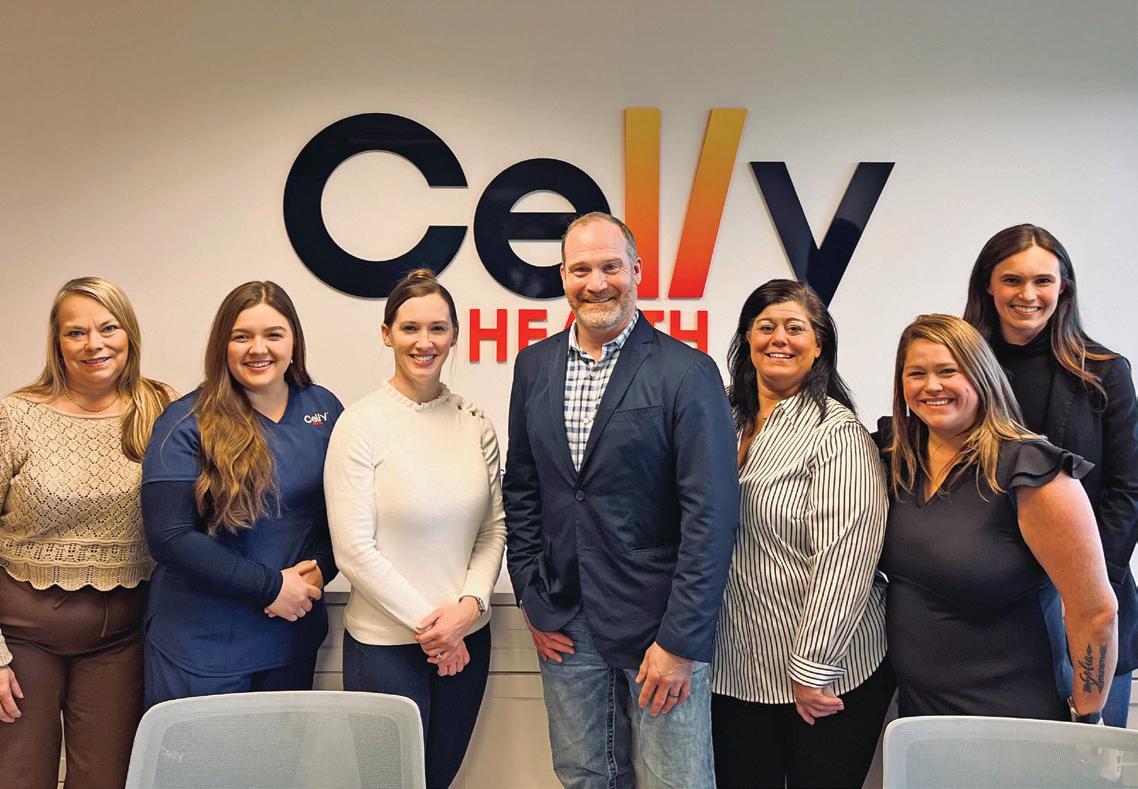




Northern Michigan icon, Terri Ray, has rocked the airwaves since 1984 on KLT The Rock Station As Program Director and creator of the ultra-popular Lunch at the Leetsville Cafe, Terri has built KLT into one of the market’s highest rated radio stations and has kept it there for decades Her passion for radio and commitment to our community are big reasons why
You can see Terri in person this summer as she takes her show on the road with Lunch At The Leetsville LIVE - A look back at four decades of rock & roll in Northern Michigan















